

Jail bird
MP Todd Doherty did some hard time during the Cops for Cancer Tour de North Jail and Bail
to raise funds for the Cops for Cancer ride. A team of RCMP
on the route from Prince George to Prince Rupert.
and



MP Todd Doherty did some hard time during the Cops for Cancer Tour de North Jail and Bail
to raise funds for the Cops for Cancer ride. A team of RCMP
on the route from Prince George to Prince Rupert.
and
Citizen news service
B.C. RCMP officials are facing officer shortages and increased costs in larger municipalities while potentially closing small detachments in favour of regional hubs, an RCMP assistant commissioner said this week.
Eric Stubbs told Union of B.C. Municipalities delegates in Whistler that attrition and fewer future constables training in Regina has led to officer shortages. In response, the force is repositioning staff and considering creating regional hubs in places such as Prince George, Nanaimo, Penticton, Vernon and the Kootenays.
“In larger communities, we are looking at regional detachments,” Stubbs, a former Prince George RCMP superintendent, said.
“We’re revisiting them to see if they need to be tweaked, to be blown up, or (remain) the status quo.
“It’s scrutiny of who’s doing what, what’s the most effective model. With the spotlight on costs, we want to make sure we get that right.” Stubbs said officers would be moved in and out of hubs, possibly replacing traditional one-or-two member detachments where of-

ficers worked all hours.
“We have to be able to adapt and innovate as the environment changes around us,” Stubbs said.
The RCMP has not been without controversy in B.C. and there are those who would close local detachments and switch to municipal forces.
But, stressed Clayton Pecknold, Ministry of Public Safety and Solicitor General assistant deputy minister and director of police services, a move to city forces comes at a significant cost to a city’s budget.
“More and more, the cost of policing is becoming a concern for the ministry,” Pecknold said.
UBCM safety committee chairman Bruce Hayne said provincial policing has cost $1.19 billion this year, up from $1.08 billion in 2016.
“These costs are not going down,” Hayne said.
Stubbs downplayed a shortage of new officers while acknowledging problems with attrition and members moving on to other work.
“We’re recruiting the people we need,” he said.
“We’re doing our best to get them into strategic areas.”
Part of the aim, he said, is keeping communities safe by targeting prolific offenders.
“They don’t care about the community,” They care about themselves,” he said.
Other prime policing areas are the domestic violence, sexual violence, and mental health issues and the opioid crisis, Stubbs said.
“The RCMP has become a leading agency in the deployment of (opioid overdose-reversing drug) Naloxone.”
Gang violence remains a Lower Mainland issue, he said, adding that the RCMP has learned from fighting gangs, putting it in the forefront of such work in Canada.
Potentially complicating matters is the looming unionization of the RCMP and timelines for trials set by the Supreme Court of Canada.
The top court’s Jordan decision in 2016 established strict timelines for getting a criminal case to trial.
The court gave the police and courts 18 months in provincial court and 30 months in superior court.
If the timelines aren’t met, cases can be tossed for violating an accused’s right to be tried in a reasonable time.
Stubbs said that means officers are spending more time at their desks doing the required timeline paperwork rather than responding to calls.
“This is a real issue – our having to stay in the office.”
Mark NIELSEN Citizen staff mnielsen@pgcitizen.ca
A small-business advocacy group has heaped a degree of praise on Prince George in its most recent survey of municipal efforts to contain spending.
In a report the Canadian Federation of Independent Business issued Wednesday – and less than six weeks before the general voting day for the province’s civic elections – the city was singled out for reducing spending on a per capita basis during the 2015-16 fiscal year.
While the city’s population declined by 1.4 per cent, its spending when adjusted for inflation declined by 1.8 per cent, the CFIB found. In contrast, Burnaby and North Vancouver increased spending despite declines in their populations.
“Prince George’s ability to decrease spending indicates they may have better practices in place to control spending growth than Burnaby and the City of North Vancouver, and should be commended,” the report’s authors said.
The comment is in marked contrast to the assessment given
Prince George’s ability to decrease spending indicates they may have better practices in place to control spending growth... — Canadian Federation of Independent Business
to Prince George in last year’s report, when the CFIB ranked Prince George as the worst performer among the province’s 20 largest municipalities for 2014-15. While population was recorded to have fallen by three per cent, spending rose three per cent. That prompted Coun. Garth Frizzell, who chairs the city’s finance and audit committee, to question the CFIB’s methodology, noting it was using out-of-date population figures. Reached Wednesday, Frizzell gave a measured response to the most recent outcome.
— see ‘THE CFIB, page 3


Police have identified the cyclist who died this week in a collision with a tractor trailer unit as a 47-year-old Prince George woman.
The woman’s identity was in question when the incident occurred on Monday afternoon at the corner of First Avenue and Queensway Boulevard and a call for the public’s help was put out.
“The Prince George RCMP wish to thank those members of the public that contacted the detachment to assist with the investigation,” RCMP said Wednesday. RCMP will not be releasing her name. The initial investigation indicated that the woman collided with the trailer after the
tractor trailer turned onto Queensway off First Avenue. It is also suspected she was traveling on the wrong side of the road and on the sidewalk just prior to the collision.
— Citizen staff
The Coast Inn of the North’s wine lovers dinner in support of the Spirit of the North Healthcare Foundation has sold out, organizers said Wednesday. The event is set to go on Sept. 28 with funds raised to go to the clinical simulation lab at University Hospital of Northern B.C.
Citizen staff
—
A few flakes of unseasonal snow may have been a harbinger on Wednesday.
It was the day Judy Russell announced her production for the Christmas season and called on local actors to dig down deep and offer a farthing of talent for the poor audiences who would otherwise go without.
The play is a familiar one – A Christmas Carol. The Dickens classic has been done by Russell more than once, on years that alternate from her ongoing biennial show
The Nutcracker.
Since this was an off-year for the ballet, it was time for another title and Russell went back to the old favourite.
The tale of miserly Ebenezer Scrooge and his wild night of ghostly hauntings is in need of a cast. Audition dates are Saturday and Sunday for those wanting to try out.
There are needs for children, adults, actors, singers, and also volunteer stage crew.
Anyone aged eight and older is invited for the tryouts (past stage experience recommended).
The show will run Dec. 13-22 at the Prince
George Playhouse.
The auditions will be held at Russell’s Enchainement Dance Centre at 3540 Opie Cres. For times and audition details, call 250-563-2902 or email judydance@shawcable.com.
LIONS BAY (CP) — Two hikers who went out for what was supposed to be a day hike on Tuesday are safe after they walked out of the woods on their own. Martin Colwell, manager of Lions Bay Search and Rescue, says the women walked into the organization’s operations base on Wednesday. Colwell says it appears the women, both 19, were picked up on a highway and dropped off
The women had parked their vehicle in a lot that is used as the starting point for hikes to West Lion Peak and other popular routes overlooking Howe Sound.




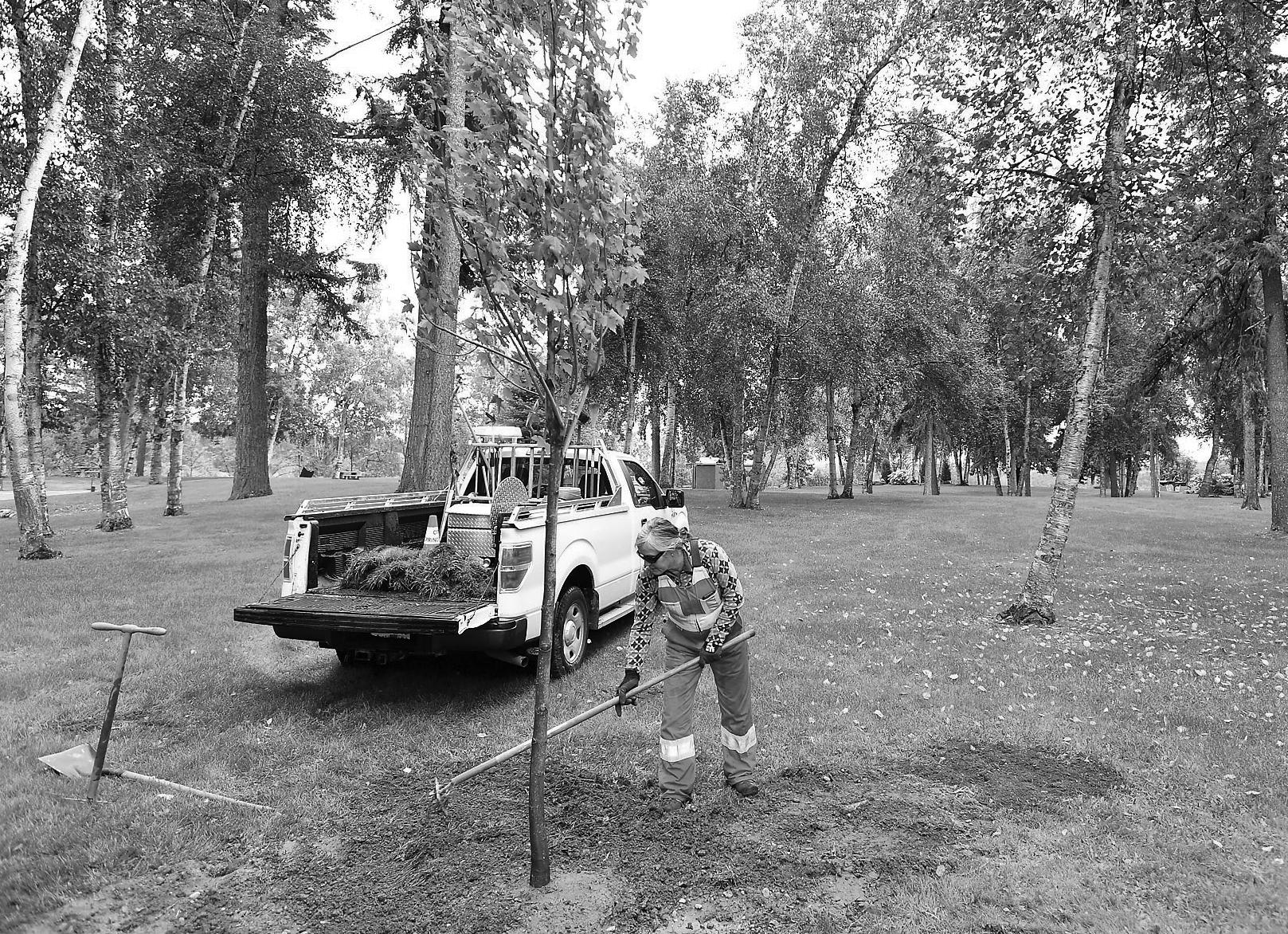
Brian Skakun is seeking a sixth term on city council.
“It has been such a privilege to serve as your elected representative for the past 16 years,” he said in a statement issued Wednesday confirming his intention to seek re-election.
“I am down to earth and approachable and have always felt I have been there when called upon for help.”
The 50-year resident of the city, a power engineer at Intercon Pulp, went on to say he knows a great deal about the community and described himself as hard working and someone who brings knowledge and passion to every council meeting he attends.
“I’m not shy about sharing my thoughts on a number of issues and will stand up for what I believe is in the best interest of the community,” Skakun said.
‘The
— from page 1
Skakun said it takes teamwork to get things done but being a council member “does not mean however, you need to lose your independence of thought and action.”
“If re-elected I will continue to work hard on behalf of the community and will focus on a number of issues including a complete review of senior administration compensation, illegal dumping, targeting problem property owners, road rehabilitation, reopening Quinn Street sani dump and transfer station, increasing seniors housing and opportunities and a structured project management model for infrastructure failure.”
Skakun has set up a handful of social media links: www.brianskakun.com, brianskakun@facebook.com, Brian Skakun for Council@Facebook.com and brianskakuncity@twitter.com.
General voting day in the municipal election is Oct. 20.
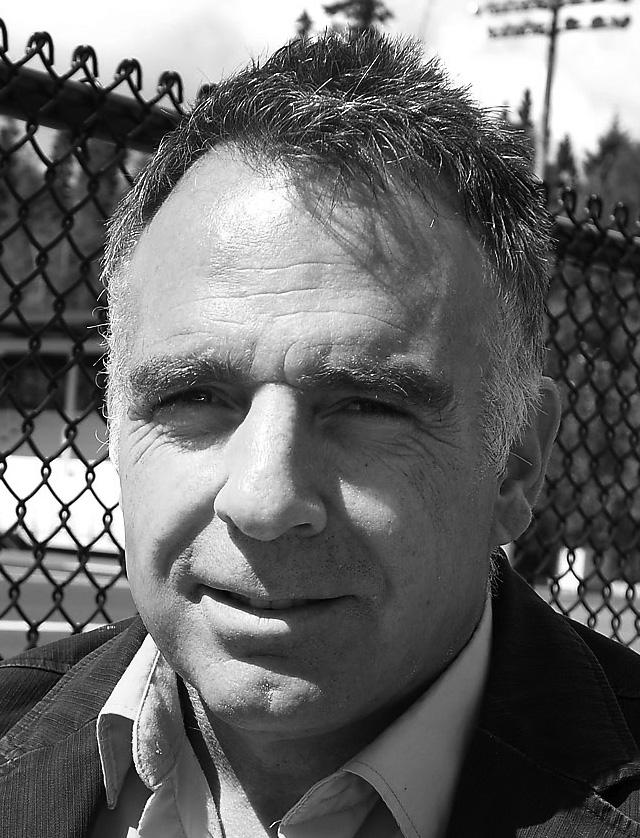
“The CFIB, the way it does its analysis, leaves a lot of questions – it always has so I wasn’t ready so say we had an atrocious problem when they said that and I’m not ready to scream success when they say we have made all of these advances this time,” he said.
“But there is good news. Maybe their system is showing the indications of what we’ve seen – with the utility rates staying at zero per cent for so many years and with the tax rate this time being under the rate of inflation, plus paying down all that debt over the past
five years, maybe the real numbers that we’ve got are affecting how they do their analysis and the process they use.”
The trend for 2015-16 helped improve Prince George’s ranking among the province’s 20 largest municipalities when spending over a 10-year period, from 2006 to 2016, was taken into account.
The city placed 10th best, up from 16th in last year’s report.
However, only eight out of B.C.’s 152 municipal governments have kept operational spending at or below levels of inflation plus population growth over the decade examined and no major
municipal government with more than 25,000 residents made the list.
Among B.C.’s largest municipalities, Port Coquitlam remained the top performer, as real operating spending per capita grew by 7.6 per cent during 2006-16.
In contrast, Prince George’s grew 14.6 per cent. As well, the city’s per capita spending in 2016 stood at $1,810, up by $16 from the year before, or 0.9 per cent before inflation is take into account.
The full report is posted with this story at www.pgcitizen.ca.
Frank PEEBLES Citizen staff
fpeebles@pgcitizen.ca
A deejay is here on stage Friday night fresh off the Ariana Grande tour on which he was an opening act. He is a long way from his Las Vegas home but this is a city in which he’s taken a few spins and he can’t wait to come back.
DJ Knowledj (pronounced Knowledge) was raised in the Toronto/Mississauga area in early childhood, then moved to Kelowna later in his youth. He went to UBC (he’s an economist by trade). His attention turned northward when his former longterm girlfriend, Andrea Sakamoto, introduced him to her hometown of Prince George and he was instantly interested with this city’s scene.
“I’d be at The Generator probably three times a year. I had a huge fan-base in Prince George,” he said and the feeling was mutual. He appreciated the club support from the Van Oord family, proprietors of The Generator, and he was close with local deejay and promoter Aidan Kelly, the former general manager of Tourism Prince George.
“We’re still friends to this day. He’s one of the greatest promoters I’ve ever worked with, anywhere, period,” Knowledj said. “He knew how to make a show go well, and a solid, solid guy on top of that.”
Wayne Carrasco is another P.G. friend whom he met in Ontario
but has now located to northern B.C. It was Carrasco and Chris Van Oord who connected Sonar owner Jason Luke to Knowledj. It’s a show he is jamming in between a gig in Whistler and another gig in Seattle all on the same weekend, with P.G. sandwiched in between.
“No joke, Prince George felt like second home to me, for quite some time. I’ve always loved that city, the people are awesome, and I really mean that,” Knowledj said.
He’s bringing his biggest hits with him. When he was here in the 2010-13 window of time, he hadn’t yet hit big with the tune Bottle Poppa, his famed collaboration with Fatman Scoop (he of the club smash Put Your Hands Up) and Deceptaconz.
“He literally inspired me to deejay back in the day, with his party breaks,” he said of Fatman Scoop, who is now one of his closest buddies. “What I love about him being my friend is he challenges me. He gets paid big bucks, he works with top-level artists, and I convince him to jump on with little old me, we come up with a concept, we come up with an idea of how we can reach people with it.”
Knowledj is also bringing to P.G. his latest work with Scoop “and I’ll be dropping it in Prince George. It’s the first place we’ll be playing it, P.G. and Whistler.” It’s a music segment intended to hype a sports stadium, a new genre the two deejays are pioneering.
Sports is close to Knowledj’s personal heart as well as his musical muscles. He grew up a
hockey-playing kid like so many Canadians and now that he’s a pro beat-dropper living in the NHL’s newest hockey territory, he’s having mental flashes for how to work with the soaring Vegas Golden Knights to bring his two main loves together. He’s in early talks with the arena’s sonic wizards about splicing in Knowledj creations for the benefit of the hockey audience he is himself such a part of. Now he’s coming back to P.G., and insists that the small Canadian cities are his favourite, even when compared to exotic locales on the other side of the world. For information on how to get into the exclusive appearance on Friday night of DJ Knowledj at Sonar Comedy & Night Club, check their Facebook page or website.
Potential customers are reading this ad right now. Call
Jeremy HAINSWORTH Citizen news service
B.C. cannabis users could be paying a provincial tax as high as 10 per cent on their purchases if the province’s municipalities get the tax deal they say is necessary to offset the effects of marijuana legalization.
“Legalization will cost money municipalities don’t have,” Federation of Canadian Municipalities president Clark Somerville told delegates at the Union of B.C. Municipalities (UBCM) conference in Whistler. “Make sure you are pushing for a fair local share.”
Cannabis will be legal in Canada Oct. 17. New laws will allow people over 18 to possess up to 30 grams of legally produced cannabis, give adults the right to grow up to four plants per household, regulate production, sale and distribution and establish provisions for impaired driving.
B.C. has introduced the Cannabis Control and Licensing Act and the Cannabis Distribution Act and brought in changes to the Motor Vehicle Act to address legalization.
Worker safety is already covered under impairment provisions of the Workers Compensation Act. At the local level, said Vancouver Coun. Kerry Jang, responsibilities will include policing and bylaw enforcement, licensing of retail operations, changes to land use management and zoning and enforcement of local regulations.
UBCM president Wendy Booth said the organization would debate a resolution today to guide both short- and long-term cannabis revenue sharing with Victoria.
She said Victoria could rake in a projected $125 million from the cannabis excise tax in the first two years of legalization.
She said that number compares to $73 million in Quebec and $100 million in Ontario.
The UBCM supports the idea that municipalities should share in that excise tax to help pay for the burdens legalization will place on local governments.
Under the UBCM’s proposed short-term strategy, the provincial government would provide municipalities with 40 per cent or $50 million of the projected excise tax revenue of $125 million in the first two years of legalization.
Under the proposal, any revenue over that $125 million would be shared evenly.
“Excise tax revenue would be distributed to B.C. local governments on a per capita basis, with all municipalities and regional districts getting at least $10,000,” Booth said.
Under the resolution, the original framework would stay intact in the long term, barring any significant changes.
And the UBCM would like to see the original seven-per-cent tax boosted to 10 per cent.


Tragically, a 47-year-old cyclist died Monday afternoon at the corner of Queensway and First Avenue. As soon as the incident was reported, however, there seemed to be only one question: whose fault was it?
An RCMP investigation found the woman, riding her bicycle on the sidewalk and on the wrong side of the road, crashed into the semi truck and trailer as it turned from First Avenue onto Queenway. No one likes to blame the victim, particularly when that person loses their life as the result of a bad choice, but it’s important to recognize when the driver in such a crash is not to blame.
The same thing happened on a much more horrific scale earlier this year. Everyone wanted to know which driver was at fault in the Humboldt Broncos bush crash. After a lengthy investigation, the RCMP did charge the driver of the semi truck and trailer that hit the Broncos bus and the case is before the courts.
Even in what appear to be easy situations, however, blaming solely one act or one individual for a tragedy is often a mistake. Most people know that basic truth yet still look for an easy explanation – whose fault was it? – to help them understand the situation. Unfortunately, taking such a simple approach often does not bring understanding
at all. Usually, it’s downright wrong.
Our prehistorically shaped brains evolved to be great at making these snap either/or decisions and it served our ancestors well at deciding whether the approaching person was a friend or foe and whether the rustling bushes was either the wind or the beast about to eat us for lunch.
Sadly, the same brains don’t work so well in the complex, modern world.
Osama bin Laden and his gang of thugs were to blame for 9/11, as the world marked that sad anniversary this week, but stopping there ignores so many other contributing factors to the terrorist attack, from the failure of U.S. intelligence agencies and airline security protocols to increased radicalism and anti-American sentiment throughout the Muslim world.
It’s easy to manipulate anyone who sees the world through a black and white lens, whether it’s to convince them to hijack a plane and fly it into a building, vote for Donald Trump or Justin Trudeau, reject climate change as legitimate science, reject vaccinations as legitimate preventative medicine or pick Pepsi over Coke, the NFL over the CFL, Ford over GM.
Reducing the world to good/bad literally reduces people’s worlds, compressing them into a radicalism where only they and people like them are good and the rest are bad.
In his book How The Right Lost Its Mind, Charlie Sykes writes about how this kind of binary thinking led American conservatives and evangelical Christians to abandon longheld political and moral traditions to support Trump’s candidacy and now presidency.
Trump’s views on abortion are fuzzy but Hillary Clinton believes in killing babies.
Trump doesn’t act very Christian but Hillary Clinton hates Christmas and practices witchcraft.
Trump doesn’t seem to care much about guns or same-sex marriage or climate change or immigration or health care reform but Hillary Clinton does. She’ll take away your guns, force pastors to marry gay couples, order industries to pay fossil fuel taxes, open the borders to anyone and offer health insurance to everyone!
With such a terrified worldview, truth doesn’t have to be true, it just has to be believable and anything about bad people or those who disagree is believable, no matter how ridiculous and blatantly wrong.
From there, conspiracy theories and apocalyptic visions take flight, unburdened by truth or decency or fairness or any consideration of a person or a topic beyond best or worst, hero or heretic, saviour or destroyer.
Canadians are no better than Americans at this, particularly in politics. Stephen

After a very long and tedious history lesson about the origins of democracy and attempting to define the word, Todd Whitcombe arrived at the real point of his latest column: to persuade his readers that what we have in the way of an electoral system is quite OK and satisfies the definition of democracy.
I disagree with him. Inherent in the meaning of democracy is an equal right to participate in the discussion. Since we have a representative system of government, the equal right to participate translates to each voter’s vote having the same value. That isn’t the case with our unfair and undemocratic system.
How is that possible? It’s possible, because with first past the post, coupled with a riding system, some votes have more value than others. Unless supporters of a certain party are concentrated enough in a riding, their votes don’t elect anyone.
In safe ridings, voters supporting parties other than the “safe” party, might as well not come out to vote. Their vote is wasted.
A party whose supporters are scattered around the province, may be very numerous, but if they are not concentrated in a riding, they will not get the number of seats they deserve. An example was the Green Party in 2017 –17 per cent of the votes, almost
half of what the other parties received, and only three per cent of the seats.
First past the post is not democratic. It distorts the will of the people. In 1996 Gordon Campbell’s Liberals won the popular vote by three per cent and lost the election to the NDP.
Proportional representation gives the same value, more of less, to each vote. In B.C., 50 per cent of votes do not elect a candidate. In Scandinavian countries, under PR, over 95 per cent of the votes go to electing someone.
Which is the more democratic?
Vote yes for PR and electoral reform. If you don’t like it after two election cycles, there is a money back guarantee through a referendum to go back to first past the post. Daryl Sturdy, Vancouver
I’m writing as a student, a mental health advocate, a junior hockey player in Kelowna and a community leader, in support of Petition E-1736, recognizing every Oct. 10 as World Mental Health Day and I urge all Canadians to sign this on-line document.
The petition to the House of Commons states:
“Whereas: “• Mental health affects all Canadians at some time in their lives, possibly through a family member, or friend;
“• In any given year, 1 in 5 Canadians experience a mental health illness or addiction problem. By the time Canadians reach 40 years of age, 1 in 2 have – or have had – a mental illness;
“• Almost 1 in 10 adults will have gone through a major depression at some point in their lives, and the total number of 12-19 year olds in Canada at risk for developing depression is a staggering 3.2 million;
“• Canadian youth who experience early adversity such as childhood trauma, are more likely to develop mental health problems of all severity;
“• An estimated 1.2 million children and youth in Canada are affected by mental illness, and 75% of all mental disorders show their first onset before the age of 25;
“• Among Canadians aged 15 to 24 years old, suicide is the second leading cause of death. Within indigenous communities, the suicide rate is 5 to 7 times higher than the broader Canadian average; and
“• World Mental Health Day is observed on October 10th each year to raise awareness of mental health issues, advocate to end the social stigma of mental health and to mobilize efforts in support of mental health.
“We, the undersigned, citizens of Canada, call upon the Government of Canada to designate October 10 every year, as World Mental Health Day in Canada.”
Myles Matilla Kelowna
LETTERS WELCOME: The Prince George Citizen welcomes letters to the editor from our readers. Submissions should be sent by email to: letters@pgcitizen.ca. No attachments, please. They can also be faxed to 250-960-2766, or mailed to 201-1777 Third Ave., Prince George, B.C. V2L 3G7.
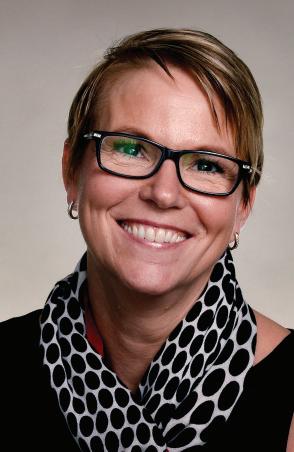

Mailing address: 201-1777 Third Ave. Prince George, B.C. V2L 3G7
Office hours: 9:00 a.m. to 5:00 p.m., Monday to Friday General switchboard: 250-562-2441 info@pgcitizen.ca General news: news@pgcitizen.ca Sports inquiries: 250-960-2764 sports@pgcitizen.ca
Classifieds advertising: 250-562-6666 cls@pgcitizen.ca
Harper and the Conservatives spent years demonizing the federal Liberals in general and Trudeau in particular as gun-hating potheads too soft and stupid to govern.
Trudeau turned the tables, however, by demonizing the Harper Conservatives as cruel, heartless money managers who didn’t care about people. Neither is true but the either/or framing of the politicians and their politics made choosing simple and avoided the hard work of looking at platforms and promises for many voters.
When we take the time to try to understand people and perspectives we don’t agree with, our world expands and our understanding broadens.
We see opposing individuals and views as opportunities for discussion, not as mortal threats to our way of life.
When we see beyond black and white, we see colours. When we gaze further than good or bad, we’re far more likely to see the similarities with our neighbours, rather than just the differences. When we look through either/or, we are faced with a complex reality where lies and blame are easier to find than facts and truth.
When we at least make the effort, we have a much better chance of seeing the world as it is, rather than the easy to understand way we wish it was.
— Editor-in-chief Neil Godbout
Another smoky August made for miserable northerners as many were forced to temporarily move, ditch their summer plans or retreat indoors from the oppressive smog last month.
Not the best conditions from which to run a “move north” campaign, doubly so when the words “this is the new normal” start circling around.
Trouble is, we could use a few more good people up here.
Or, really, a lot more.
Many communities across the north this past year have complained about the sheer number of jobs that are going unfilled in our towns, everything from hospitality, retail and service sector jobs to truck drivers, professionals and administrators.
It’s becoming increasingly difficult to attract and retain good talent in the north and every employer from restaurants to local government is feeling it. I know at least one chief administrative officer in a small town who has given up trying to find a traditionally-qualified candidate for a management role and is willing to hire unskilled local help and train that person to fill the role.
Or there’s the other pervasive challenge: a northern employer has landed a rock star employee but is only able to keep him or her for one or two years before said rock star is back on tour, so to speak.
Thing is, it’s not as if we didn’t know this was coming, eventually the boomers would retire, and there’d be more jobs available than people.
But it’s not as simple as that up here. A few more things have happened in recent years that have complicated matters.
First of all, the workforce of 2018 is highly mobile.
We’re not the only region that’s looking for skilled workers, and those workers, if they’re willing to move, will select positions in communities that offer the best quality of life and provide decent compensation.
Earlier this year, we polled communities across the north on their workforce attraction initiatives and learned the challenge isn’t so much making potential workers aware of our communities, it’s offering them communities they want to live in.
In fact, one of the biggest barriers to workforce attraction efforts in the north now is housing. Our stock is old (typically built before 1980), inadequate (not everyone wants a four-bedroom bungalow with two big yards) and many homes (10 to 15 per cent across the north) need major repairs.
On top of that, in many communities there is limited rental housing available for single professionals or even families. Hard to get ’em here if they don’t have a place to live.
Community amenities are another challenge.
Workers increasingly want to live in vibrant, diverse communities with things to do, places to enjoy and facilities to use. Small, resource-based communities have been strapped for cash for so long that many of the facilities built during the boom years (once again, pre-1980) need upgrades, and there isn’t a lot of money to go around to do it, not to mention trying to find the dollars to build new facilities.
Organizations such as ours are structured to provide ongoing grant funding to help upgrade and build these amenities – it’s a core part of our business.
But funding to build the amenities is only one part of the equation; the other part is the money needed to run them, which, if they’re publicly owned, comes from local taxpayers, or, if they’re built and run by a non-profit, comes from volunteer hours and fundraising.
Last I checked, not too many people were keen on higher taxes, and most non-profits in the north are running perennially short on volunteers.
OK, so then what?
Well, our traditional industries have in the past generated most of the private income and tax revenue in many of our small communities, so growth of those sectors has the potential to generate enough new income to address our housing and amenity challenges, which would help us build more sustainable and attractive communities to solve our workforce challenges.
But for that to happen we need those industries to grow, and for them to grow we need consistent policy and strong markets to help move major projects forward.
Of course, we could look at building other industries – new, diverse, innovative industries.
The challenge is that entrepreneurs these days like to live in communities where they can find a home and enjoy local amenities.
You see the conundrum we’re in. — Joel McKay is the chief executive officer of Northern Development Initiative Trust and a former Business in Vancouver editor
Display advertising, digital advertising and website inquiries: 250-562-2441 ads@pgcitizen.ca Reader sales and services: 250-562-3301 rss@pgcitizen.ca
Letters to the editor: letters@pgcitizen.ca
Website: www.pgcitizen.ca
Website feedback: digital@glaciermedia.ca



on silcrete stone, found in the Blombos Cave in South Africa. In a report released on Wednesday, scientists say this tiny 73,000-year-old sketch is the oldest known drawing.
NEW YORK — It looks a bit like a hashtag, but it’s 73,000 years old. And scientists say this tiny sketch found in a South African cave is the oldest known drawing.
It’s not the earliest deliberate design; some abstract engravings are far older. But the drawing shows early humans in southern Africa could produce designs on various surfaces with different techniques.
The collection of crisscrossed lines was found in the Blombos Cave about 300 kilometres east of Cape Town.
It is at least 30,000 years older than any other known drawing, researchers say in a report released Wednesday by the journal Nature.
It was created with a sharpened flake of ochre, a pigment widely used in the ancient world, said Christopher Henshilwood of the University of Bergen in Norway.
The drawing is basically six red lines crossed by three other slightly curved lines.
It appears on a tiny flake of mineral crust measuring only about 39 mm long and about 15 mm tall.
It’s evidently part of a larger drawing because lines reaching the edge are cut off
abruptly there, researchers said.
The drawing was apparently made before the flake was deliberately struck off of a grinding stone used to make ochre powder, Henshilwood said in an email.
Similar patterns are engraved in other artifacts from the cave, and the hashtag design was produced widely over the past 100,000 years in rock art and paintings, he said.
So the newly found sketch is probably not just a collection of random scratchings.
“It almost certainly had some meaning to the maker, and probably formed a part of the common symbolic system understood by other people in this group,” he said.
The finding gives evidence that early humans could store information outside the brain and supports the argument that early members of our species “behaved essentially like us” before they left Africa for Europe and Asia, he said.
Silvia Bello, a researcher at the Natural History Museum in London who didn’t participate in the study, called the finding important.
“It further shows how rich and complex human behaviour already was 73,000 years ago,” she said in an email.
Fall is here. The first snow is falling.
The sky is cloudy. And after a summer under the haze of wildfire smoke, it seems we are quickly slipping into the dreary days of winter.
Human beings – like most animals – are creatures of habit and instinct. The diurnal pattern of day and night (and day and night) provides our bodies with all sorts of clues. The rhythm of our daily life reflects this pattern as it tells us when to sleep, when to feel tired, when to eat, when to rise, and many other aspects of our existence beyond our conscious control.
Fighting these rhythms is one of the hardest things to do for shift workers – particularly if their shifts change from day to night or vice versus. It takes a lot of time to reset our internal clocks and, for many individuals, it is almost impossible.
The longer rhythm produced by the moon’s cycles gives rise to a number of patterns. Both men and women have cyclic variations in hormone levels and behavioural patterns which correspond roughly to a month in length.
The subtlest of patterns is seasonal. We don’t migrate like birds or fatten for hibernation like other mammals, but the gradual progression from fall to winter can affect us. For some people, the fading of the summer sun triggers a depression or mood disorder called Seasonal Affective Disorder or, appropriately enough, SAD for short.
As I am a chemist, I’m not trying to offer a medical diagnosis, but the symptoms of SAD are usually listed as:
• Extreme fatigue and a lack of energy.
• An increased need for sleep or sleeping much more than usual.
• Carbohydrate cravings and an increased appetite.
• Weight gain.
• Moodiness. In many ways, the symptoms of SAD almost sound like the physiological preparation undertaken by many mammals as they prepare to hibernate. Presumably, with food scarce in the winter, our genetic ancestors evolved a tendency to be more sedentary in the winter months, a carry-over from our primate past.
Various causes have been proposed for SAD. One proposal for the mechanism behind the disorder is linked to the production of the neurotransmitter melatonin in the brain. All of our brain activity is regulated by a series of chemical compounds and their respective receptor sites – a sort of biological version of a lock and key. The over- or under-production of these compounds can have significant impact on our thoughts and feelings. Much of ourselves is determined by the levels and timing of the release of neurotransmitters and other compounds.
Sheryl UBELACKER Citizen news service
TORONTO — Taking high-dose folic acid during pregnancy does not prevent pre-eclampsia in women at elevated risk for the potentially deadly condition, a Canadian-led international study has found.
The finding, which refutes a long-held belief about folic acid’s preventive role in pre-eclampsia, is expected to alter the practice of prescribing extra doses of the B vitamin to high-risk pregnant women worldwide.
Principal investigator Dr. Mark Walker said the study’s finding doesn’t mean foregoing low-dose folic acid, which is taken to prevent fetal neural-tube defects, which can cause such conditions as spina bifida.
“All women should take folic acid for at least three months prior to conception,” said Walker, chief of obstetrics and gynecology at the Ottawa Hospital.
“I think it’s safe and efficacious to take
.4 to 1 milligram of folic acid in a multivitamin throughout the pregnancy.
“However, those women who are at risk for pre-eclampsia, there is no benefit to being on a high dose of folic acid.”
Pre-eclampsia is a condition caused by elevated blood pressure as a result of pregnancy. It is the second-leading cause of maternal death in Canada after venous blood clots that go to the lungs. Each year, about 78,000 women around the world die from the condition.
The 2011-2016 study recruited about 2,300 pregnant women at risk for preeclampsia, who were enrolled at 70 centres in five countries – Canada, the U.K., Australia, Jamaica and Argentina.
Half the women were randomly assigned to take four extra milligrams of folic acid daily, while the other half received a placebo pill.
“(What) we found was there was absolutely no difference between the group treated with high-dose folic acid and the placebo,” Walker said.

In terms of the lock and key model, under-production means there are not enough keys to go around. Some biochemical pathways don’t get turned on or are not activated strongly enough to have an effect. Over-production results in too much stimulation. Every lock gets opened and there are a few extra keys pushing for more activation. Biochemical pathways get turned on too strongly and for too long.
Melatonin is produced in response to dim light or darkness by the pineal gland. Its role in our brains is to help control our sleep and wake cycle through the regulation of hormone production. Melatonin production is affected by light as there is a direct connection between the pineal gland and the retina via the suprachiasmatic nucleus so the amount of light we see can significantly impact melatonin levels.
Studies have shown high levels of light in the morning appear to assure the limited production of melatonin later the same night. Imbalances in melatonin levels can lead to chemical imbalances triggering depression. Too little sunlight can affect one’s brain which affects one’s mood.
Another postulated mechanism for SAD involves serotonin. Genetically-modified mice designed to be incapable of turning serotonin into N-acetylserotonin appear to express depression-like behaviour and respond to selective serotonin uptake inhibitors such as fluoxetine. While the link between serotonin and depression-like behaviour is well established, the difficulty with this hypothesis is connecting serotonin production to levels of light or other seasonal triggers. In any case, research has indicated a link between latitude and SAD.
In Florida, it is estimated SAD affects only 1.4 per cent of the population, but by the time you get to our latitude, the number is close to 10 per cent and in the Yukon it has been estimated 33 per cent of the population suffer annually. Further, SAD is at its worst in February during the dreary doldrums of winter.
The correlation between latitude, the amount of daylight and SAD indicate light is the key and high intensity light therapy is often used as a treatment regime.
So, with the arrival of September and the first days of snow, we have a long dark winter to look forward to and for some people, another battle with a debilitating disorder.
The good news is winter will eventually be over.

Paola LORIGGIO, Shawn JEFFORDS Citizen news service
TORONTO — Ontario’s legislature plunged into chaos Wednesday as protesters and most of the Opposition were ejected for disrupting the government’s efforts to revive a bill slashing Toronto’s city council nearly in half just days after a judge found the legislation unconstitutional.
Shouts erupted from the public gallery and some hecklers were led out in handcuffs as Premier Doug Ford argued he was protecting democracy by invoking a constitutional provision to override the court decision, which found his plan to cut council during an election campaign violated freedom of expression rights.
“This is about preserving the will of the people, this is about preserving democracy,” Ford said, citing his Progressive Conservatives’ victory in the spring election.
Asked whether he believed in the Charter of Rights and Freedoms, the premier said a democratically elected government should not be derailed by
a “politically appointed” judge. Ford has maintained cutting Toronto city council to 25 seats from 47 is necessary to streamline decision-making and save taxpayer money.
The council-cutting bill and the notwithstanding clause that will ensure its implementation were introduced by Ford’s government Wednesday afternoon following a commotion from the Opposition benches.
The New Democrats attempted to drown out the reading of the bill by banging on their desks, prompting the Speaker to kick most of their ranks, including Leader Andrea Horwath, out of the house. Horwath said her party members had launched their protest to show they wouldn’t accept Ford’s “heavy-handed” decision lightly.
Earlier in the day, members of the public in the legislature voiced their own discontent by coughing in unison to drown out the premier when he tried to speak. That disruption quickly turned into a series of shouts and heckles.
“Shame on you, this is not democracy,” one man shouted at the premier.
“We are the people.”

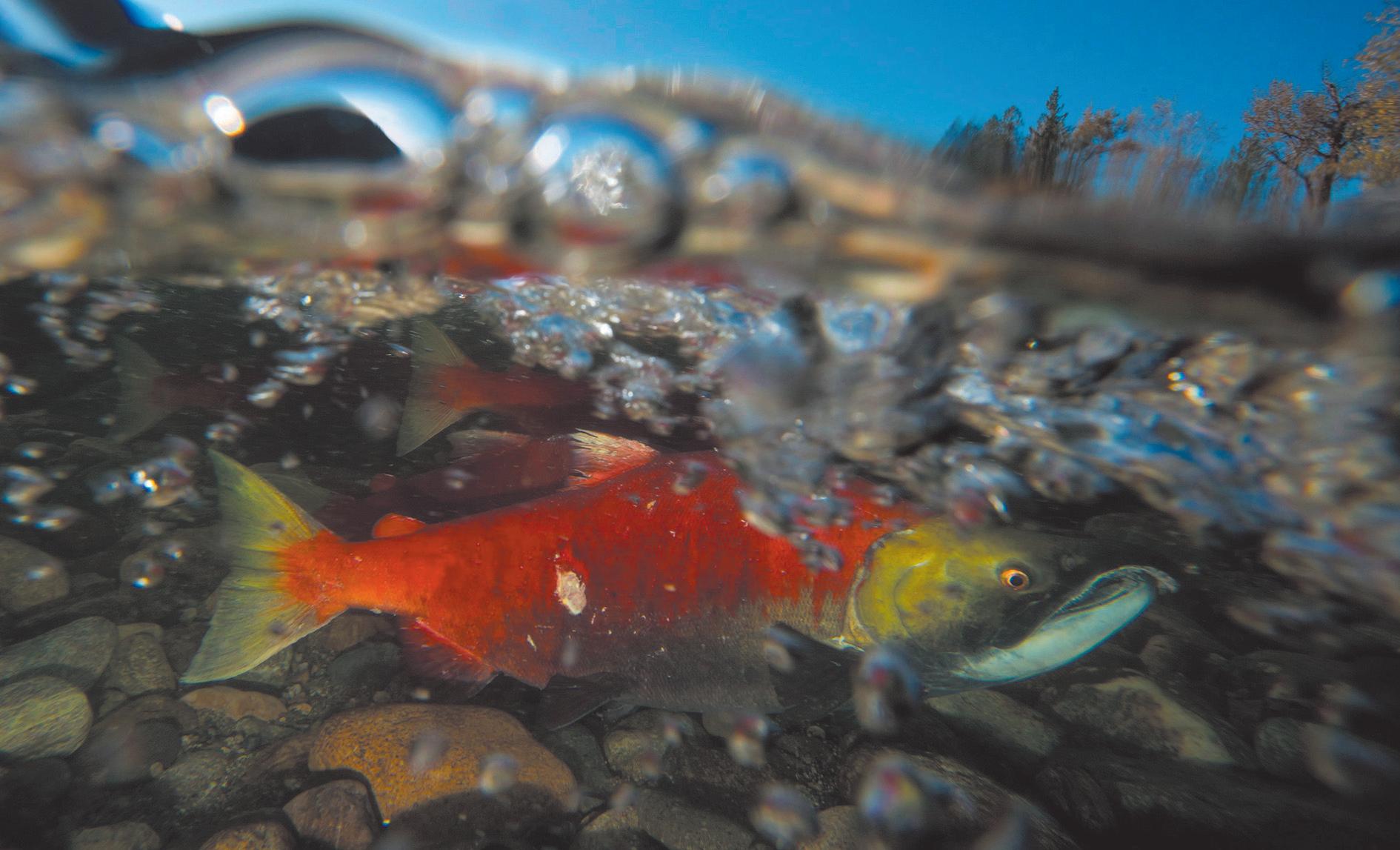
Dirk MEISSNER Citizen news service
VICTORIA — A spill of diluted bitumen puts the survival of young salmon at risk even if the fish end up in clean water following exposure to the oil product, says new research from the University of Guelph.
Researchers said they made the conclusions after exposing four groups of sockeye salmon eggs to four different amounts of water soluble diluted bitumen and observed the young fish after the eggs hatched for up to eight months in clean water.
“We saw a lot of changes during the exposure,” said Sarah Alderman, a post-doctorate researcher at the University of Guelph’s department of integrative biology. “We found a whole suite of effects from delayed hatching to increased mortality, increased developmental deformities and changes in growth and energy stores in the fish.”
The results are based on the concentrations of polycyclic aromatic hydrocarbons measured in the water, which are a major toxic component of petroleum products, said Alderman.
She said almost 50 per cent of the salmon exposed to the highest amount of bitumen died during the first two months after they were moved to clean water and observed for up to eight months.
“We found for about the first two months after moving them to clean water we had really high mortality even though they are not being exposed to the dilbit (dilut-
ed bitumen) anymore,” said Alderman. “We saw mortality as high as 50 per cent during that two-month period. Every day there’s more dead and more dead.”
The research was published this month in the peer-reviewed journal Aquatic Toxicology.
About 1,000 sockeye eggs were used in each of the four exposure tests, with the amounts ranging from four micrograms of polycyclic aromatic hydrocarbons per litre of water to 35 micrograms per litre to 100 micrograms per litre, Alderman said. The fourth group of eggs was not exposed to the product.
Alderman said the largest exposure amount of 100 micrograms per litre reflected the level of oil products measured along the shoreline of the Gulf of Mexico following the Deep Water Horizon spill in 2010.
She said mortality among the unexposed sockeye eggs was less than two per cent.
In the exposed fish, the researchers also found changes in brain development and overall performance levels in the young sockeye that survived the diluted bitumen exposure, said Alderman.
“It’s really affecting multiple body systems in lots of different ways.”
The results from the study come as federal and provincial governments, First Nations, environmental groups and energy companies are locked in a contentious debate over the environmental and economic viability of the proposed expansion of the Trans Mountain pipeline from northern Alberta to Burnaby.
In a recent decision overturn-

ing the approval of the pipeline expansion, the Federal Court of Appeal said the National Energy Board unjustifiably excluded the consideration of marine shipping of bitumen in its approval process. The court said the board failed to consider its obligations under the Species at Risk Act in relation to southern resident killer whales.
First Nations said during the energy board’s hearings that there were research and information gaps about a spill of diluted bitumen in a marine environment. The Federal Court ruling said there was nothing in the approval process that showed the government addressed those concerns.
Bitumen has the consistency of crumbling asphalt and doesn’t flow freely like oil. It needs to be diluted with another petroleum product to allow it to flow through pipelines.
The federal government agreed last June to buy the existing pipeline, the expansion project and terminals from Kinder Morgan Canada for $4.5 billion after the company threatened to walk away from the Trans Mountain expansion project in April.
Alderman said the exposure levels of diluted bitumen were modelled on prospective amounts from a potential pipeline spill. She said the research shows the need to have clean up measures in place.
“There’s a lot of dilbit being transported in pipelines and most of it is transported very safely,” Alderman said. “But as this industry expands the potential for spills increases. We’re working to understand what to expect if it does happen.”
Teresa WRIGHT Citizen news service
OTTAWA — Intergovernmental Affairs Minister Dominic LeBlanc was found in breach of conflict of interest rules Wednesday for approving an Arctic surf clam licence to a company that employed a family member – a violation that comes with no penalties.
Ethics Commissioner Mario Dion said in a report issued Wednesday that LeBlanc knew his wife’s first cousin was involved in the Five Nations Clam Co. and knew the cousin would have benefited financially when awarding the company a multi-million dollar license in February.
Dion says LeBlanc should have recused himself from the decision.
“If a public office holder is aware of a potential opportunity to further the private interests of a relative through the exercise of an official power, duty or function, the public office holder must be vigilant in avoiding such conflicts of interest.”
The decision comes less than two months after the government cancelled the licence and started the process over to award a fourth Arctic surf clam license to encourage Indigenous participation.
LeBlanc said Wednesday he accepts Dion’s findings “without reservation.”
“Canadians expect when mistakes are made that people assume those mistakes and, more importantly, commit to doing better in the future and that’s exactly what I’m doing.”
However, the veteran MP also qualified that Dion’s ruling “confirms that no financial benefit was created in this circumstance and no preferential treatment was given.”
The deal to award a fourth fishing licence for Arctic surf clams would have ended a 19-year monopoly on the Arctic clam fishery held by Clearwater Seafoods, offering 25 per cent of the catch to local Indigenous communities.
But it first came under scrutiny when documents filed in a court challenge of the decision suggested the company did not meet the federal government’s eligibility requirements, and that Five Nations Clam Co. had close ties to the federal Liberal party – including the family ties to LeBlanc, and also connections to one current and one former Liberal MP.
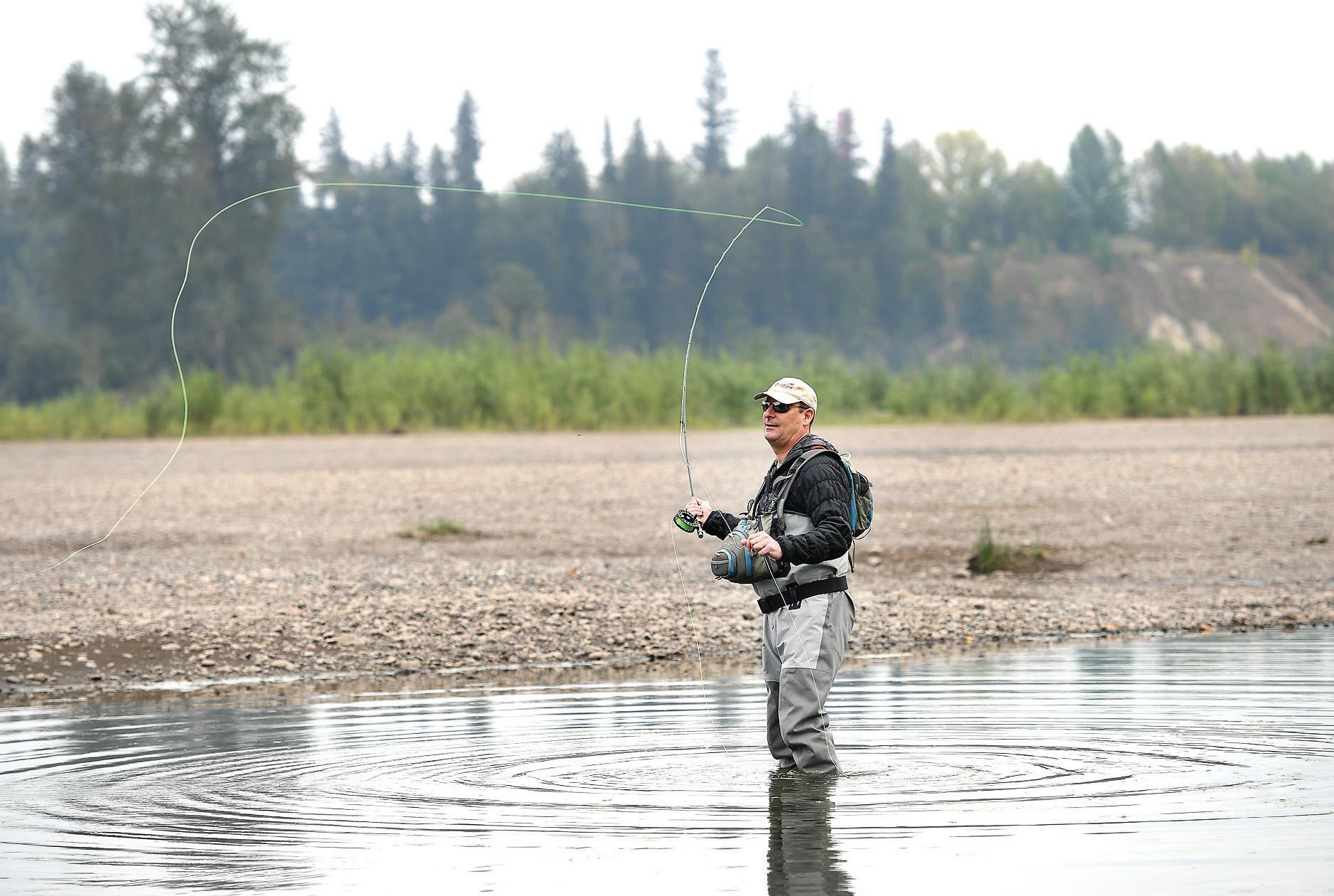
His lifelong passion is fly fishing, and he’s about to be Captain Canada at the world championships in Italy
Ted CLARKE Citizen staff tclarke@pgcitizen.ca
As a Prince George RCMP general duty officer, Claude Cipelletti spends his working days catching criminals.
Being good at his job requires patience, stealth, intuition and an exceptional understanding of his surroundings – qualities that have served him well during his 16-year career with the RCMP. The goal is to always be one step ahead of his targets and predict where they might be hiding to boost the odds of trapping them.
He applies the same philosophy to his favourite pastime, fly fishing.
For the 58-year-old Cipelletti, it’s not just a hobby, it’s his passion. His fishy forays began when he was a boy in Montreal and his dad first handed him a trolling rod. By the time he was 10, he was practicing casts with his first fly rod. The thrill of snagging a live wiggler never grew old and as an adult he’s taken it the next level, entering competitions.
This week he’s in Trentino, Italy, preparing to land the big ones at the world fly fishing championships. Cipelletti has been named captain of the five-member Canadian team that will compete against 29 other countries in team and individual events. The three days of competition includes five three-hour sessions on scenic rivers and lakes set against the backdrop of the Dolomites mountain range in northeastern Italy. Competing for trophies, each fisherman will try to catch the biggest and the most fish in each session.
“It’s going to be a lot of fun and I’m going to try to do well for the country,” he said. “In fly fishing competition there’s some luck involved. It’s a lottery for where

you get to fish on the river and if you don’t get the right spot then you won’t do very well.”
The 38th annual event starts on Monday and runs through to Sept. 23. The 150 competitors will be trying to reel in brown trout, rainbow trout, European grayling and a species of char called Marmota, an aggressive fish similar to bull trout. He’ll be using light two- or four-pound test line that easily sinks to the bottom of the river, where the fish are usually found.
“It’s just like an investigation, you’ve got to get to the bottom of things,” laughed Cipelletti.
“Marmota can get quite big, which will be interesting, because we’ll be rigged for trout and one of those brutes can actually grab your fly and all hell breaks loose,” he said.
Practice makes perfect, and Cipelletti and the other Canadian team members are already in Italy scouting out the terrain and testing the waters, with help from their reconnaissance scouts. Different condi-
Cipelletti finished 18th overall as the top Canadian at the America Cup in 2014 in Vail, Colo., and twice finished third in the individual and team events at the national championships.
tions require different techniques, based on the speed and slope of the current, the type of river bed (rocky or flat) and what insects reside in the rivers and lakes. Having the right fly for the job is crucial and Cipelletti ties his own.
He’ll have time to experiment before the competition begins – to
devise tactics for each of the five areas. Each competitor will draw a specific area in the lottery and has to stick to that area under the supervision of an official, who measures the fish and checks to make sure all equipment is legal.
While it’s rare to find a competition in Canada, the sport is extremely popular overseas and Europeans don’t have to travel far to find the next event.
“They compete every weekend, they do it all the time and there’s lots of people,” said Cipelletti. “It’s very difficult to make (European) teams because there’s so many people. It’s easier here.”
Cipelletti finished 18th overall as the top Canadian at the America Cup in 2014 in Vail, Colo., and twice finished third in the individual and team events at the national championships.
Cipelletti has Italian roots on his dad’s side. He visited the country once when he was a kid but hasn’t been back there since. Before he became an RCMP officer he
worked in logistics for 11 years in the Canadian Armed Forces and during that time was posted to nearby Germany and he regretted not making the trip to Italy. He won’t have much time for sightseeing this trip but is glad he’ll get to see another part of that country. His first RCMP posting was in Kelowna, where he spent 12 years before moving to Quesnel for a 3 1/2-year stint. He moved to Prince George in November and has found some of his favourite fishing holes on the Blackwater River southwest of the city. “I go to the Blackwater and a couple other rivers in the area – I’d hate to have you reveal where,” he quipped. “There are rivers within an hour of Prince George that are good for practicing.”
He says while some fishermen never eat what they catch, he’s not usually into catch-and-release, unless it’s mandated. He’ll have to toss back what he catches at the world event in Italy.
“I absolutely have no problem, when it’s legal, to catch and keep a fish and eat it – they’re delicious,” he said.
He admits his military/police background serves him well when he’s casting lines.
“There’s self-discipline, of course, that’s imposed on us early on, and the ability to remain calm when all seems lost,” he said.
“After the first hour-and-a-half, and you’re not catching many fish you’re starting to sweat, so my training comes in pretty handy. I just persevere, keep at it, and don’t let yourself get discouraged.”
For stress-relief from his day job, Cipelletti can’t think of anything better.
“I find fishing, with the gurgling sound of the rivers rushing by and the wind and the trees and the birds and swearing fishermen, you kind of zone out and forget about work and your troubles,” he said. “You just fish.”

Ted CLARKE Citizen staff tclarke@pgcitizen.ca
Bobby Clarke, Cory Conacher and Max Domi all made it to the top of the hockey world.
They conquered the challenge of living with Type 1 diabetes and played in the National Hockey League.
That’s an exclusive club Prince George Cougars forward Brendan Boyle wants to join.
Playing a sport that demands so much of the body, the fact Boyle has gotten to the verge of cracking the Cougars roster as a 17-yearold rookie shows he’s not the type to let Type 1 derail his dreams as an elite athlete.
“There’s different challenges but the main thing is overcoming it –you still do anything you want to do,” said Boyle. “Just work to what you want to achieve and you can do it. Max Domi’s a great example of that and John Schick, who played in the CFL, he’s a diabetic.
“You just have to make sure you stay on top of it. It’s just like working towards anything else, it takes awhile to adjust to it but then you’re good to go once you figure it out.”
Boyle was just coming into his teen years when his pancreas started failing him. It wasn’t producing enough insulin, the vital substance that allows his body to convert blood sugar into muscle energy. Nobody else in his family had the disease. It just happened to pick him.
“You just have to stay on top of what you’re eating and make sure you know what’s in it before you take anything and be careful not to overreact to things,” he said. “If your blood sugar’s a little high you don’t want to take too much insulin and be low. You just try and counter what you eat.
“I’ve never actually gotten too low during a game but sometimes you peak a little bit and you feel it in the legs and they get a bit heavy and a little weaker. You have to

think a bit about how to get (blood sugar) down a bit, just so you’re in that peak zone where you perform your best.”
Common warning signs of diabetes include: increased thirst, hunger, frequent urination, dry mouth, fatigue, weight loss, blurred vision and headaches.
“I lost 10 pounds actually and I was just sick constantly and had to go to the bathroom, like three or four times a night, so we knew something was wrong,” he said.
Boyle wears an insulin pump, a pager-sized device which he tucks in a pocket under his hockey pants. It delivers fast-acting insulin, good for three or four hours, and he has a button control he can press to give more insulin if he needs it. The pump takes the place
of insulin injections, and he can leave it connected to his skin for three days at a time.
“I was at a hockey tournament in Chicago three days after I got diagnosed and you’re supposed to have a week course on learning everything, but I was determined to go to that tournament and I had to learn how to give myself needles,” he said.
The Cougars listed Boyle in September 2017 just before he began his first season of major midget with the Okanagan Rockets. He thrived last season as the Rockets’ second-leading scorer, collecting 18 goals and 40 points in 37 games. Now, a bigger, stronger, faster version of Boyle is stating his case to play in the WHL with the Cougars. The six-foot, 179-pound
forward has played in three of the four preseason games this month.
The Cougars pared down their training camp roster early and have been to just 27 players for the past two weeks, which has given rookies like Boyle plenty of opportunities to impress their bosses.
“If you didn’t know he had diabetes you wouldn’t even think of it, just the way he carries himself – he’s such a character kid and he plays with a big heart and likes to skate. And he can skate,” said Cougars head coach Richard Matvichuk. “He’s a guy with a teamfirst mentality. Give him credit for what he does on and off the ice to take care of his body. It’s amazing. He knows when to eat, what to eat and to do the right thing.” Boyle has been playing on a line
with Reid Perepeluk and Connor Bowie, who both love to bash bodies. That combination could stay intact as the Cougars’ fourth line this season.
“Camp’s been really good, especially this year with the small amount of guys and the extra level of competitiveness,” said Boyle. “I feel like I’ve got my forecheck going good and that’s what I need to do to succeed. I would say I’m a good skater and I try to use that speed on the forecheck and try to finish my checks when I can and try to make plays
“It’s a lot of fun playing with such talented players. We have a lot of team speed and lots of skill up front. I’ve got two big boys out there helping me out. I didn’t have my best camp but I’m looking to keep getting better.”
Boyle was born in Regina and moved to Calgary when he was three months old and played minor hockey there until his first year of midget, when he moved to Penticton to attend the Pursuit of Excellence hockey academy. Playing for the POE midget elite 15s he finished the 2016-17 season with 25 points in 28 games.
The Cougars signed him just before training camp last year and Boyle got his first taste of the regular-season action when he was called up last February. He spent three weeks in Prince George and played three games. Centring a line with Kjell Kjemhus and Liam Ryan, Boyle was left with an indelible memory less than four minutes into his first game, Feb. 9 against the Kamloops Blazers on Lumberjack Night at CN Centre
“Kjell got that first (career) goal on my first shift,” said Boyle. “He welcomed me to the league nicely. The nerves were gone after that shift.”
The Cougars wrap up the preseason Saturday at CN Centre when they host the Blazers. They start the season Friday, Sept. 21 in Victoria. The Cats’ home opener is set for Sept. 28 against the Kelowna Rockets.
Ted CLARKE Citizen staff
Last season was not one of the memorable ones for the Kelly Road Roadrunners double-A varsity football team.
It was a rebuilding year for Ryan Bellamy’s bunch and they took their lumps, finishing last out of four in the Northern Conference with a 1-3 record.
It was an entirely different story for the Kelly Road junior varsity squad.
They won three of their four regular-season games, beat their crosstown-rival College Heights Cougars in the junior varsity North Division semifinals and crushed the previously undefeated D.P. Todd Trojans 36-6 to qualify for the provincial junior quarterfinal.
Their season ended with a lopsided loss the following week in Vernon but, win or lose, that playoff experience should serve the Roadrunners well now that they’re suiting up for the senior team.
“We have roughly 30 guys returning who
either played on our varsity team or our junior varsity team that won the city (championship) last year,” said Bellamy. “The team looks good this year. We’re pretty deep, well-rounded. We have a good mix of players and we should be a strong squad. I imagine we’ll be one of the top two teams.”
Josh Harder is back as the Roadrunners quarterback and Curtis Zavaglia moves up from the junior team to add to their QB depth. Brendan Watt, a Grade 11 linebacker/running back, was picked for Team B.C. as a linebacker and he and Grade 12 running backs Colton Fors and Jordan Parent give the two pivots plenty of options when they want to keep the ball on the ground.
“We’re very athletic and we have a goodsized offensive line so that helps for going a long way,” said Bellamy, who has Brennan Adrian, Mike Bodner, Ken Newell and Jason Eikum as his assistant coaches.
The Roadrunners begin their double-A varsity schedule today at 4:30 p.m. against the College Heights Cougars on the turf at

We’re very athletic and we have a good-sized offensive line so that helps for going a long way.
— Ryan Bellamy
Masich Place Stadium. This is the first season football games in the city will be played on an all-weather field.
“They’re definitely hyped up to get out there on that field,” said Bellamy. “They put on secondary markings for the American field and the goalposts are removable so they can move them up and back so they can accommodate for the Canadian and American rules.”
The new field at Masich is marked for Canadian rules – 110 yards long and 65 yards wide with end zones 20 yards deep.
But B.C. Secondary School Football Association teams play using American rules, which specify fields that are 100 yards long and 53 1/3 yards wide, with 10-yard-deep end zones. The American field is marked in red.
The Roadrunners will play a six-game schedule with three exhibition games.
They’ll head to Kamloops next weekend to play the South Kamloops Titans, then host Clarence Fulton of Vernon the following Saturday at 5 p.m. at Masich Stadium, part of a high school football doubleheader
Jeff BELL Citizen news services
Longtime Prince George boxing coach
Bob Pegues lost more than two decades of memorabilia when his vehicle was broken into overnight Sunday, Nanaimo RCMP said.
Pegues realized that the vehicle had been ransacked and his treasures were gone in the morning. The vehicle was in the parking lot of the Rosedale Manor apartments on Departure Bay Road when the theft took place.
Pegues recently relocated to Nanaimo from Prince George after running a boxing gym in the northern city, where he worked with hundreds of youth.
Among the items stolen are four pairs of boxing gloves, a blue B.C. Boxing Team jacket with “Coach” on the lapel, four boxing trophies, two championship belts and a brown leather bag.
Anyone with information is asked to call
that wraps up with a Salmon Arm-PGSS game at 7:30 p.m. Kelly Road will play the top-ranked Vernon Panthers on Oct. 6 in Vernon.
The Roadrunners’ first scheduled game last week against the D.P. Todd Trojans was postponed due to wildfire smoke.
The Cougars are coming off a 3-1 season which ended in a 31-11 loss in the P.G. Bowl Northern Conference final. Grant Erickson and Brad Paakkonen are back as the Cougars senior team coaches. Jack Page is head coach of the Trojans, while Pat Bonnet and Brett Morrow will be calling the shots from the sidelines for the Polars.
The Duchess Park Condors won’t have sufficient numbers for a double-A varsity team. The Condors pulled out of the league after one game last year and not having a senior team as a destination for the juniors hurt their chances of recruiting enough players for this year. Like many teams in the north, they were affected by smoky conditions the past few weeks which canceled tryouts and also hurt recruiting. The Condors junior varsity team, under coach Craig Briere, will be well-stocked this season.
The Roadrunners and Prince George Polars kicked off the junior varsity season Wednesday afternoon at Masich.
The South Kamloops Titans will travel to Prince George to play the Nechako Valley Vikings of Vanderhoof in an exhibition this Saturday, starting at 7:30 p.m.
PGSS will be in Chilliwack Saturday to play the G.W. Graham Grizzlies.
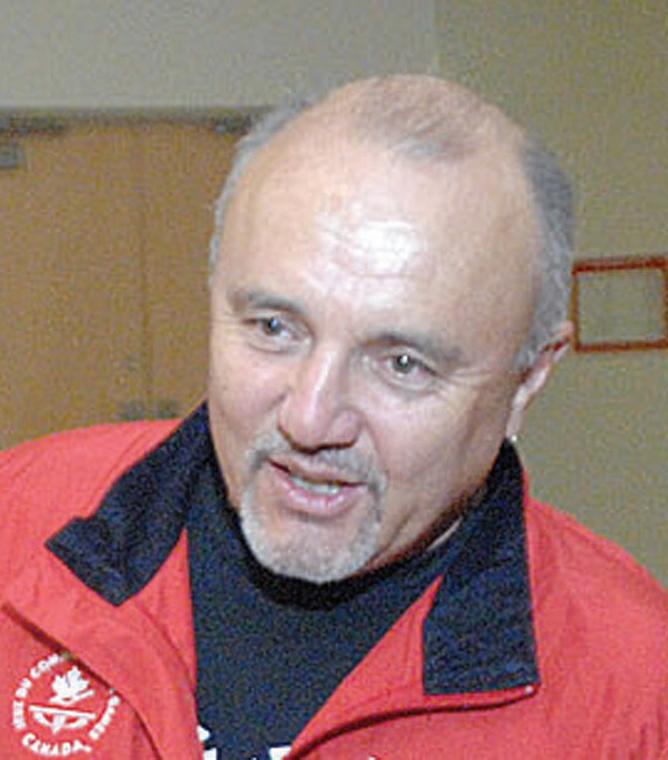
LAS VEGAS — When Max Pacioretty told his kids he had been traded from the Montreal Canadiens, one of his three sons pointed to his bedsheets covered in NHL team logos and asked which one was Vegas. Problem is, the sheets were pre-Golden Knights. Instead, he showed his sons a YouTube video of the team’s pregame extravaganza during the playoffs. They quickly became excited, and they weren’t the only ones.
“When we came here and we played them... it was one of the most amazing hockey experiences in my life,” Pacioretty said Wednesday at his introductory news conference. “I’m really looking forward to it. It’s a first-class organization that I’m proud to be a part of.”
The 29-year-old Pacioretty, who was traded Sunday and immediately signed to a $28 million, four-year contract extension that runs through the 2022-23 season, said coach Gerard Gallant and general manager George McPhee made it clear he was being brought into an organization that is ready to compete for a Stanley Cup again.
Add in the research he did about the community, his familiarity with Gallant, who was an assistant in Montreal in 2012, and the success of the team in its inaugural season, and the All-Star felt it was a good time to relocate.
“I feel I have the opportunity right now to just get back to what I loved doing as a kid, and that’s just going out there and having fun and playing hockey,” Pacioretty said. “They play a fast game, they’re all on the same page every single night and they play for each other. They mentioned that there’s going to be 23 captains on the team this year, and I could feel that today with the energy in the room and the camaraderie of the guys. I’m just excited to be a part of that.”
Pacioretty, who had 17 goals and 20 assists last season with Montreal, said he is also excited to be reunited with veteran centre Paul Stastny, whom the Knights signed earlier this year. The Pacioretty-Stastny tandem will be familiar to fans of past versions of the U.S. men’s national hockey team and could prove to be an upgrade to a second line that lost James Neal and David Perron in free agency.
“Every time we play for Team USA, we are linemates. Our wives are friends, our parents are friends, we’re friends, we do have chemistry,” Pacioretty said. “He’s a very reliable centre who takes care of his end, slows down the game, more of a give-and-go player, that’s why I like playing with him a lot.
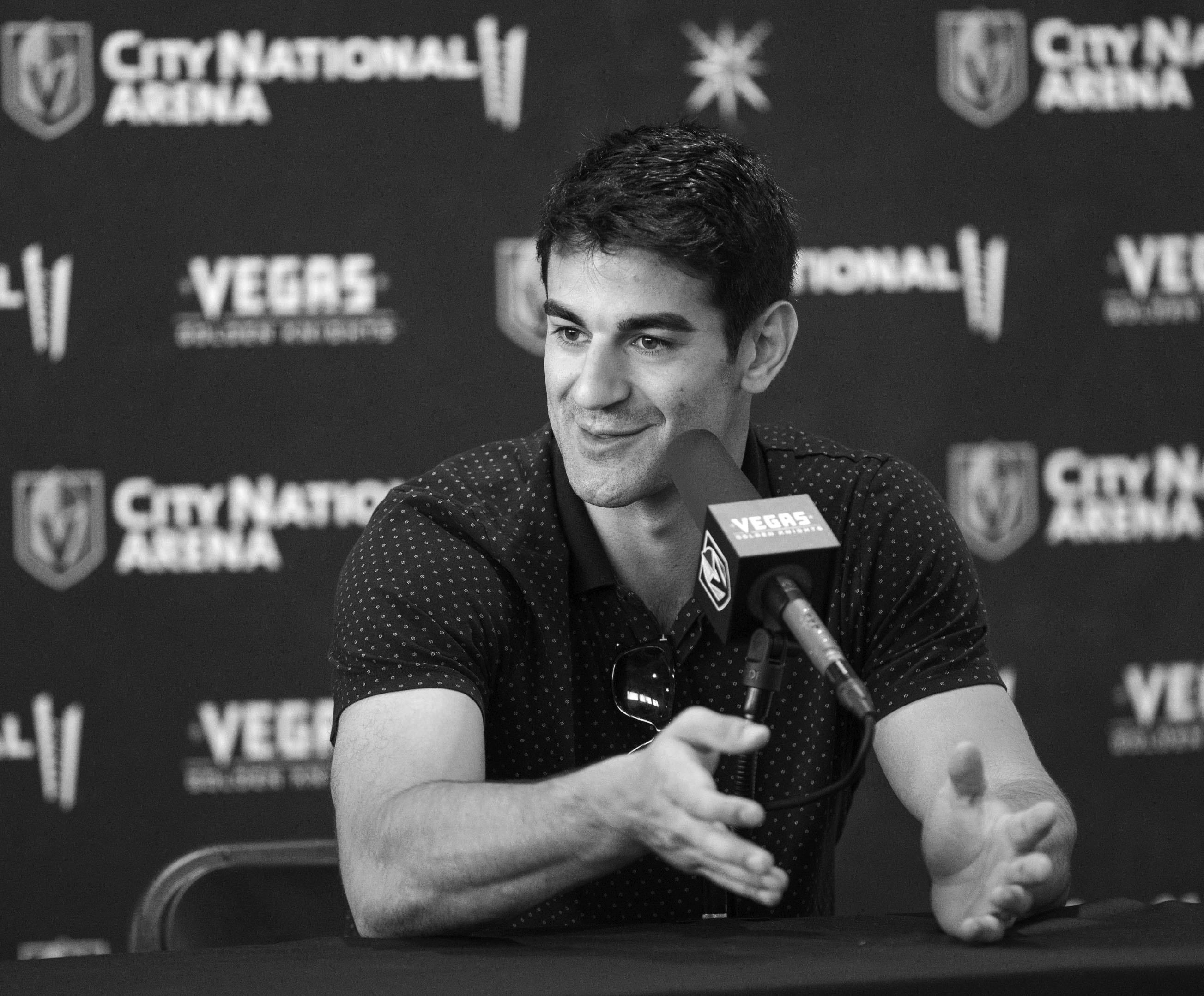
“Just to come in and know that you have previous chemistry with another player and that that’s always an option is a comforting feeling. And also knowing that we’re going through the process of being new players in an organization together is another comforting feeling.”
Forward Reilly Smith, who ranked fourth on the team with 60 points last season, said the addition of someone with Pacioretty’s resume can benefit each player individually, bringing out the best in everyone.
“It’s always nice to bolster your lineup a
little bit,” Smith said. “He’s a gifted goalscorer, he’s able to move up and down the ice with anybody else in the league. It’ll be exciting to add his speed, it’ll help quicken up the pace. I think we like playing a fast style and his game suits that.”
Smith joked that goaltender and team prankster Marc-Andre Fleury hadn’t indicated how he’ll welcome Pacioretty, saying “Flower usually keeps it pretty tight-knit (and) doesn’t tell too many people.”
While Pacioretty said he enjoyed his tenure with the Canadiens and is thankful for the
Citizen news service
CORAL SPRINGS, Fla. — Roberto Luongo has an arena named after him. He has made roughly $100 million in career earnings, knows he is headed to the Hockey Hall of Fame one day, ranks among the sport’s alltime leaders in virtually every goaltending category. And in a true testament to Luongo’s popularity, the Twitter account of his alter ego even has close to a million followers. His legacy was secure long ago. He doesn’t need to play anymore.
Yet here he is, regularly arriving at the Florida Panthers’ training facility even before coach Bob Boughner on most mornings, spending more time getting ready for his daily workout than most people do on their actual workouts, not partaking in any hobbies during the season because he wants
nothing to take away from his focus, still seeking any tiny way to make himself just a little better in net. His save percentage, in a season when he turned 39, was higher than the one when he turned 29. Or the one when he turned 19, for that matter.
Luongo is still driven, primarily for one reason – he’s never hoisted the Stanley Cup, the grail he wants most.
“He just prepares better than anybody I’ve ever seen at that position and that age,”
Boughner said. “He’s just such a pro.”
The Panthers were one of the hottest teams in the NHL in the second half of last season, and wound up missing the playoffs by a point in another woebegone chapter for the franchise that hasn’t qualified for the post-season in 15 of the last 17 years and hasn’t won a playoff series since 1996.
Hope springs eternal, Luongo believes,
and once again he’s arriving for the start of the season expecting to win the final game.
“Guys are maturing and understanding the game more and more every year,” Luongo said. “Hopefully we’re ready, right off the bat.”
This season presents a dichotomy of sorts:
Florida is a team that thinks its talented young core – Aleksander Barkov, Aaron Ekblad, Vincent Trocheck, Mike Matheson and Jonathan Huberdeau are all 25 or less – is just getting started. Luongo is a goalie who is nearing the proverbial finish. Yet even with James Reimer on the roster, and Reimer will play plenty, Luongo is the goalie they will rely upon from the outset on opening night.
“I just love the game,” Luongo said. “I feel that I enjoy it more now than when I was a little bit younger. I’m more mature, under-
career and relationships he established while in Montreal, he said he is ready for change.
“If I had got taken by Vegas in the expansion draft, I wouldn’t be feeling the way I am today,” Pacioretty said.
“Everyone had a lot of question marks about what this franchise was going to be like. Nobody knew this was going to turn into a hockey town. I’m very excited to be in Vegas, this is a new chapter of my life. I’m ready to be a part of something that they’re building here in Vegas that’s very special, so I’m very honoured to be here.”
stand things a little bit better, more focused on enjoying my time and not so much focused on other things that maybe aren’t under my control, which I used to do earlier on in my career that I kind of regret now.”
He didn’t use the word Vancouver, because it was obvious. After his first stint in Florida ended in 2006 Luongo spent eight years with the Canucks, lost a Game 7 of the Stanley Cup final with them – in Vancouver, no less – and eventually wound up getting traded back to the Panthers.
Luongo comes into this season with 471 wins, fourth-most in history. The Cup is out there. And he’s running out of time to get his fingerprints on the chalice. “Lu’s done everything but win the Cup,” Boughner said. “He knows this is a big year for this team. And Lu, when he’s at the top of his game, he’s still a top-10 goalie in this league.”
Humboldt Broncos current and former players look on as banners are unveiled during a tribute to the team after its SJHL game against the Nipawin Hawks in Humboldt, Sask., on Wednesday night.
The banners in the foreground show the names of players who survived an April bus crash. In the background are the names of those who lost their lives.
The Broncos had just played their first game since the crash.
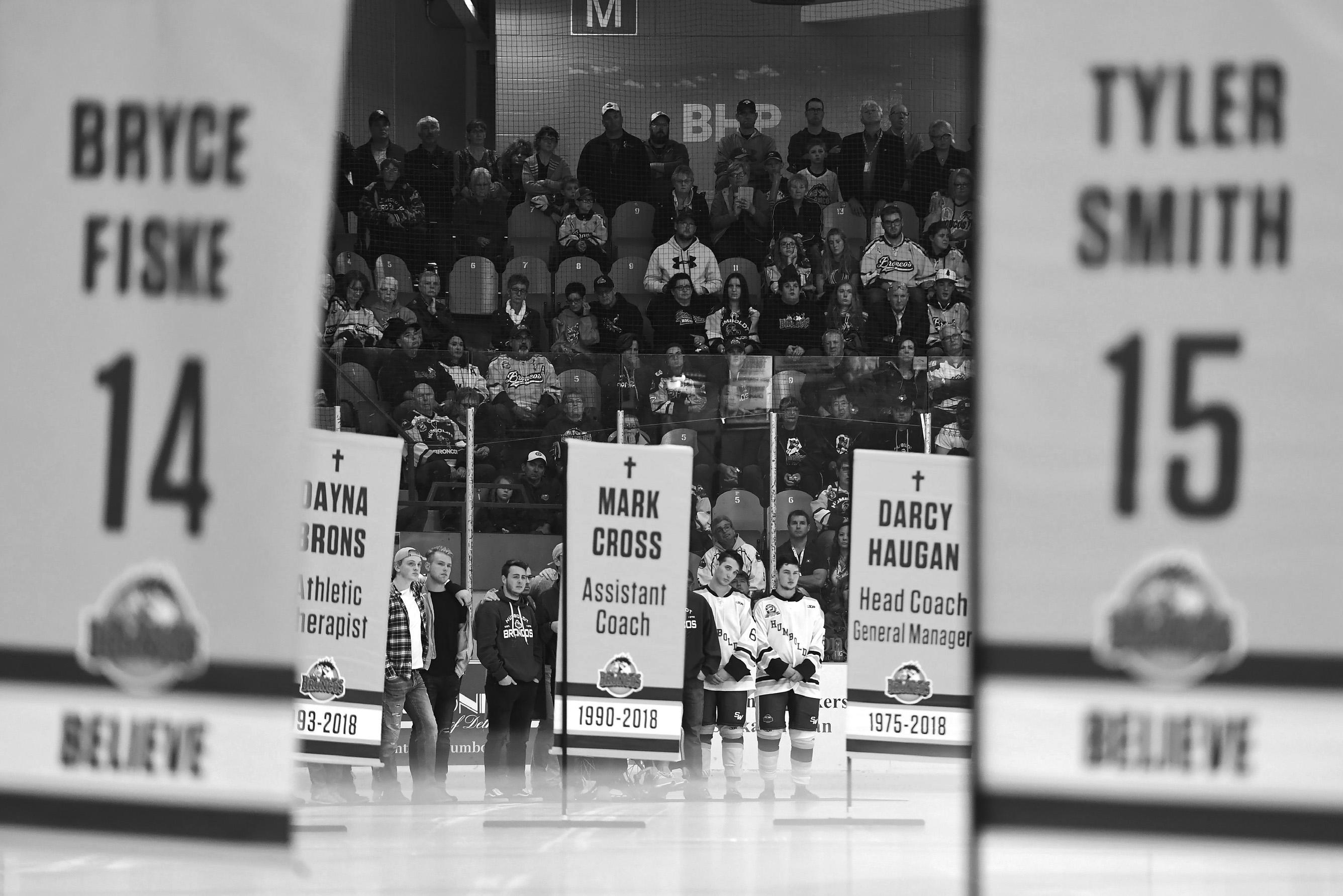
Ryan McKENNA Citizen news service
HUMBOLDT, Sask. — The names and numbers of those involved in the Humboldt Broncos bus crash were raised to the rafters as the team tried to emerge from the grips of tragedy Wednesday night.
Family members and fans cheered through tears as 29 yellow and green banners were unfurled honouring the 13 injured and remembering the 16 dead.
“We know that, while the darkness is much less, it will never truly leave us as it holds the love that we have left for those who are no longer with us and those who have been impacted by this tragedy,” said former Broncos president Kevin Garinger, who was the face of the team in the aftermath of the crash.
“But we will forever cherish their memories and honour their legacy and, as hard as it has been, we have and will continue to move forward with them and because of them.”
The Broncos came up short in an emotional first regular-season game before the ceremony.
The Nipawin Hawks, last year’s Saskatchewan Junior Hockey League champions and the same team the Broncos were travelling to face when the crash happened, rode two late second-period goals to a 2-1 victory.
But it was a night where the score was secondary.
The evening began with eight of the surviving players who aren’t with the team anymore dropping the puck in the ceremonial faceoff before the game.
Kaleb Dahlgren, who now plays university hockey in Ontario, said it was important to be there.
“I think it is a step in the healing process,” he said. “Tonight definitely helps heal the wounds but it won’t for sure heal everything. There is still lots that needs to be done.”

Some of the injured players’ injuries were still apparent.
Xavier Labelle, who was initially mistaken as being among the dead, has a large scar running across his forehead down to his eye, while goaltender Jacob Wassermann used a wheelchair to get onto the ice.
And while some of the survivors dropped the puck, two others suited up and played.
Brayden Camrud and Derek Patter are the only two players who were involved in the crash and are back on the Broncos this season.
Camrud overcame a severe concussion, loss of feeling in one of his arms and neck issues. His play stood out for the Broncos Wednesday night.
Many family members were also
in attendance.
Dahlgren’s father, Mark, was struck by the tribute photos outside the arena as he and his son pulled up.
“I just saw all the pictures of the people that passed on the bus and I just looked over at him and said: ‘Sure glad your picture’s not up there,”’ he said. “We’re the lucky ones and we don’t take it for granted. Every day we are appreciative to have him with us.”
The game was difficult for at least one of the players who suffered lifelong injuries in the crash.
Former Broncos player Ryan Straschnitzki, who was paralyzed from the chest down in the crash, opted not to watch the season opener in person. He wasn’t even sure he wanted to watch the game
on TV even though it’s been on his mind.
“It’s not my team anymore,” Straschnitzki said earlier. “I wish them the best of luck, but it’s not my team and it’s going to be hard to watch knowing that I should be out there.”
Tom Straschnitzki said he understands why his son might be hesitant.
“He should be playing in this home opener today as with the other players,” he said. “It’s a difficult day.”
Humboldt Mayor Robert Muench said he thinks the game marks a step forward for his small city.
“I think people were... really looking forward to the season getting going and seeing the new
team and seeing the results of a lot of work from a lot of people getting the team back on the ice,” he said.
“In my mind, it’s kind of a new page, a new chapter in the book I guess – moving forward as a community and as a team.”
The Broncos will board a bus again on Friday and head to Nipawin for a rematch.
Team president Jamie Brockman said the organization is grateful for all the support it has received from across Canada and the world.
“We’re going to find out what our new normal is after today,” he said. “Hockey is back in Humboldt. We are strong and we are going to survive and we are going to move forward.”

Victoria
AHEARN Citizen news service
TORONTO — Actor Eric Peterson is ready to take on the Canadian courtroom again on Street Legal, only this time he’s swapping his suits and ties for robes.
CBC-TV announced Wednesday that the Corner Gas star will reprise his Street Legal role of Leon Robinovitch on an upcoming reboot of the Canadian courtroom drama. Original cast member Anthony Sherwood, who played prosecutor Dillon Beck, will also return.
On the original series, which ran from 1987 to 1994, Leon was an immigration lawyer at a Toronto firm. Now, he’s a judge.
“My virtual legal career has been astounding,” Peterson, 71, said in a phone interview.
“I was a judge on This is Wonderland and now I’m a judge on Street Legal. I think it comes with the age.”
Six new episodes of the popular Gemini Award-winning series are set to premiere on the public broadcaster this winter, with the story taking place 25 years after the original series.
Original cast member Cynthia Dale will reprise her role as Olivia
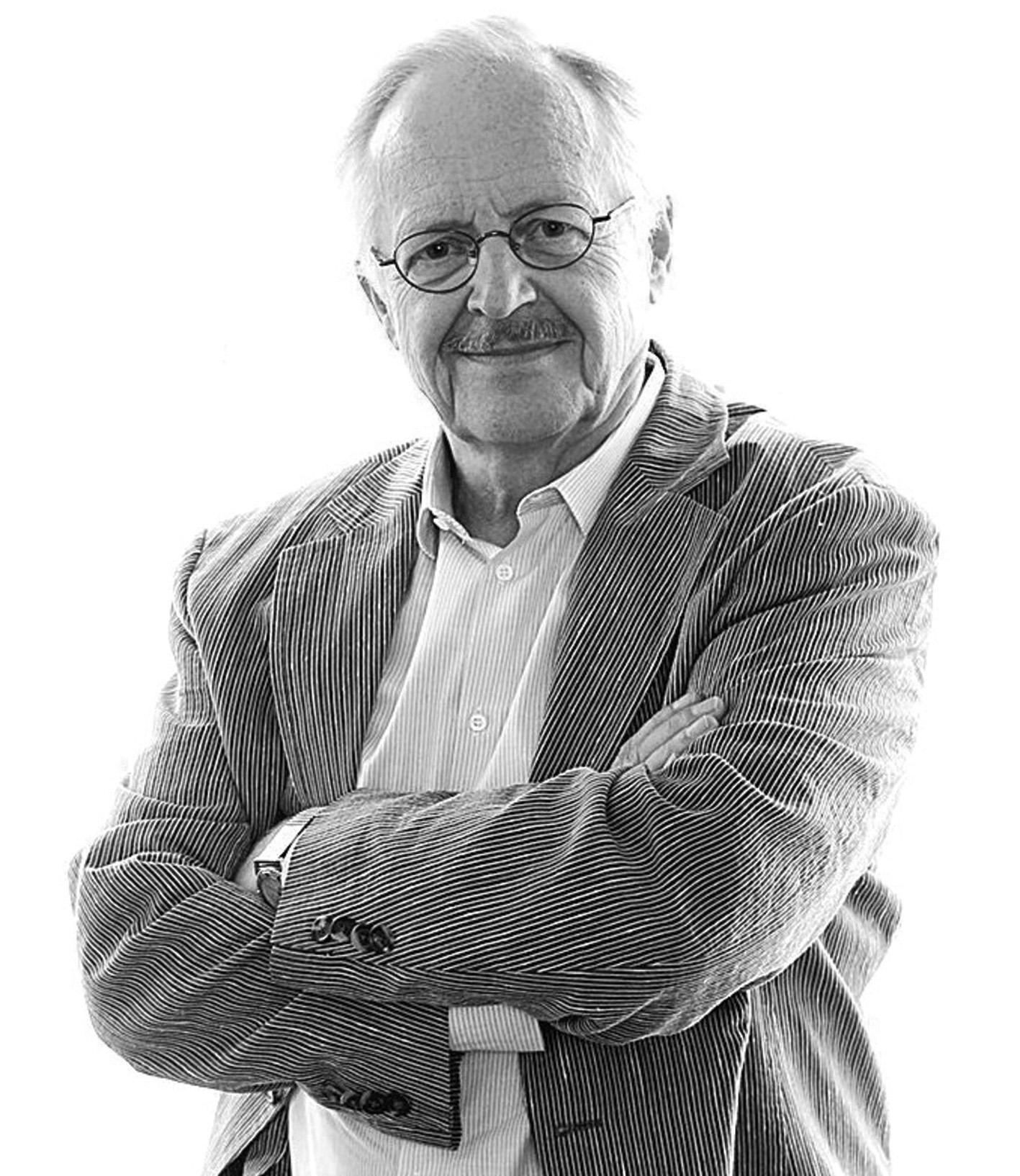
Novak, who now works at a boutique firm after the elite one she was at disbanded.
PHILADELPHIA (AP) — After 90 minutes of nonstop singing and piano playing – which had the audience on their feet and desperately waiting for more – Elton John returned to the stage dramatically, and epically.
There was the sound of loud thunderstorms, dark blue, smoky lights surrounding the arena, and a grand, candle-lit chandelier on the large screen – all while music in the vein of Michael Jackson’s Thriller played in the background.
The Rocket Man, who kicked off his Farewell Yellow Brick Road Tour about 100 kilometres
NEW YORK — Norm Macdonald’s comments about the MeToo movement and fellow comedians Louis C.K. and Roseanne Barr led to the The Tonight Show cancelling his appearance and spurred apologies from the comedian that could bring their own problems.
In a statement, NBC said it cancelled Tuesday’s appearance “out of sensitivity to our audience.”
of lawyers. Peterson said he’s excited Canada will once again have a legal drama added to the tide of American ones to showcase how our judicial system works.
“You ask people here and they want to bang the gavel and say ‘Order, order.’ We don’t even have a gavel here,” Peterson said.
“It’s nice to have television that we’re proud of, like to watch, that is about us, specifically.”
Peterson said it will feature contemporary storylines, using the structure of one case for the whole season, with Dale “as the conduit and the continuity.”
“It’s contemporary too that the... source of expertise, of experience, is a woman,” Peterson said. “So that’s a shift that I think is long overdue, and it’s nice to see in this series too, where women are the leaders and not just the followers.”
Peterson’s character will appear in the final two episodes and will be portrayed as compassionate judge.
“He was the leftie in the firm,” Peterson said. “The picture on his office wall was Tommy Douglas. He was always fighting for the little guy, the good guy, the good cause against power and might and all that stuff.”
Peterson said when he first
from Philadelphia on Saturday, sang like a confident, electrified pro in the City of Brotherly Love on Tuesday. It was the second show on his 300-date tour set to reach five continents, stretching into 2021. He will retire from the road after the shows.
His performance throughout the night was so rousing that concert-goers, ranging from thirtysomethings to people about John’s age (he’s 71), reacted in various ways: some recorded every moment with their cellphones like anxious teenagers, while others danced
heard of the Street Legal reboot, he “was incredibly enthusiastic” about it.
The original show took him to a new level of fame, after his starring role in the play Billy Bishop Goes to War, and he found himself suddenly being recognized in the streets.
“The other thing which interested me was it was Canadian,” Peterson said.
“It was being watched by over a million people every week and it continued to be. People would put aside their Friday night to watch it as if they were watching it live.”
Peterson has returned to several of the same projects over the years, including Billy Bishop Goes to War and Corner Gas, which is now an animated series featuring his voice.
“It gives me a sense that we do have our own cultural story here that goes on,” he said.
“I have a bunch of old Street Legal hats and jackets that I’m sure will be worth a fortune on eBay or wherever you sell this stuff. I was looking at pictures of us, my God we were young, and did we ever have big hair.
“I have a hard time having the big hair this time – I’m lucky to have any hair.”
without a care, yelled every lyric and played the air-piano.
Others calmly took in the energy from their seats – after all, it was a school/work night.
The nearly three-hour concert began with Bennie and the Jets, as John pounded away at the piano.
The Oscar, Grammy and Tony winner performed two dozen songs, including classics like Your Song, Tiny Dancer, Rocket Man, Saturday Night’s Alright (for Fighting), Candle In the Wind and I’m Still Standing.
The former Saturday Night Live cast member told The Hollywood Reporter he was “happy the # MeToo movement has slowed down a little bit.” Macdonald said people used to receive a second chance, but now “there is no forgiveness.”
Macdonald mentioned Louis C.K, who was accused of sexual misconduct, and Barr, who was fired from her show in May.
“There are very few people that have gone through what they have, losing everything in a day. Of course, people will go, ‘What
Citizen news service
NEW YORK — CBS News on Wednesday fired 60 Minutes top executive Jeff Fager, who has been under investigation following reports that he groped women at parties and tolerated an abusive workplace.
The network news president, David Rhodes, said Fager’s firing was “not directly related” to the allegations against him, but because he violated company policy. Fager said it was because of a text message he sent to a CBS News reporter who was covering the story about him.

“My language was harsh and, despite the fact that journalists receive harsh demands for fairness all the time, CBS did not like it,” Fager said.
The investigation into Fager by an outside law firm is not complete. Fager has denied charges made by former CBS employees in the New Yorker magazine of personal misbehaviour at parties and not disciplining people under him who had misconduct issues. Fager said he would not have thought that one note would have resulted in a dismissal after 36 years at the network, “but it did.” CBS had no immediate comment on his characterization of the action.
60 Minutes is the most popular and powerful network news broadcast on television, and Fager is only the second person to lead it during its 50 years of history. He was appointed in 2004 to succeed founding executive Don Hewitt.
He worked to modernize the broadcast and uphold its standards during a changing of the guard from the show’s original cast of figures like Mike Wallace, Morley Safer and Andy Rooney.
His firing came only three days after the CBS Corp. board ousted the company’s chief executive, Leslie
—
the book’s release date. She will finish at the American Airlines Center in Dallas on Dec. 17, Live Nation and the Crown Publishing Group announced Wednesday. In between, appearances will include Barclays Center in New York City, the Pepsi Center Arena in Denver and The Forum in Los Angeles.
about the victims?’ But you know what? The victims didn’t have to go through that,” Macdonald said.
Then in an interview with radio host Howard Stern on Wednesday morning while explaining and apologizing for his remarks, Macdonald said “You’d have to have Down syndrome not to feel sorry” for the victims of sexual misconduct.
He had already tweeted an apology Tuesday night saying he would never defend the actions of Barr and C.K.
Moonves, who was charged with sexual misconduct in the same New Yorker articles.
Fager and Rhodes had worked for several years as a team, when Fager was appointed CBS News chairman by Moonves. Rhodes was then brought in as news president, taking over full management of the news division when Fager went back to solely running 60 Minutes.
Fager’s second in command at 60 Minutes, Bill Owens, will run the show while a search is conducted for a permanent replacement, Rhodes said. The show debuts a new season on Sept. 30.

“If my words sounded like I was minimizing the pain that their victims feel to this day, I am deeply sorry,” Macdonald tweeted.
His new talk show, Norm Macdonald Has a Show, debuts Friday on Netflix. A Netflix spokeswoman said the streaming service has no comment on Macdonald’s remarks, but Macdonald told Stern he had talked to Netflix chief content officer Ted Sarandos about the interview and “he knows I’m a good guy.”




McFADYEN KERSTIN ETHELMINE (NEE WENZEL)
JAN.18, 1974JULY 28, 2018


Sandra Lea Wight
Sandra Lea Wight passed away peacefully on August 30, 2018 with family by her side. A Celebration of Life will be held Sunday, October 7th from 11 - 2pm
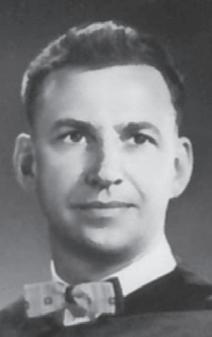

Dr Eldon Edward Lee
May 5, 1923 - September 3, 2018
What an Incredible Life!
Eldon Lee was born in Happy Valley, Chico, California to mother, Shirley and father, Edward Lee. At the age of 6 he moved to a ranch in the Cariboo, along with his brother Todd, his mother and her extended family. Years on the ranch during the depression were not easy. However, their strong faith in God carried them through.
From being home schooled to graduating Magna Cum Laude from Seattle Pacific College, he went on to pursue his medical degree at the University of Washington (1955), and completed a specialty in Obstetrics and Gynecology in Vancouver and Birmingham, England.
In 1962, Eldon became the first, and for many years the only, OB/GYN north of Kamloops. After delivering thousands of babies it is only fitting that he passed away in the wee hours of “Labour Day”. In recognition of his tremendous contributions to the medical community, he was installed as a life time member of the Canadian Medical Association in 1995 and inducted into the Northern Medical Hall of Fame in 2009.
On August 22, 1952 Eldon married the love of his life, Marjorie Cartmell in a ceremony performed by her father, Brigadier Arthur Cartmell. During their marriage they embarked on many adventures including international travel, family time at Lee Cottage on Cluculz Lake, Thanksgiving weekends at Squawk’s Lake, and family reunions in the Cariboo. Along the way, 6 children joined their adventures. After 66 years of marriage, Eldon and Marjorie still exemplified their love and respect for each other.
Eldon embraced many passions in life. He was a cowboy rancher, RCAF bomber pilot during WWII, hunter, author, Greek scholar, and Sunday school teacher. He enjoyed a variety of sports including being the star goalie of the PG Doctors hockey team back in the 60’s and 70’s. As Eldon got older he turned to more thrill-seeking adventures - an Ultra Light plane and then an ATV (his last quad ride was a couple of days before he went into the hospital). Eldon and Marjorie were steadfast in their faith in God and were longstanding active members of St Giles Presbyterian Church.
Eldon will be dearly missed by his wife, Marjorie; Children: Vickie (Art) Brown, Barbara (George) Cruwys, Peter (Christine), Stuart (Michelle); Grandchildren: Sarah, Laura, Ben, Elicia, Brianna, Erin, Amy, Mike, James, Jonah, Emersyn; Great Grandchildren: Taylor, Kayden, Evan, Mya, Olivia, Robert; as well as many extended family and friends, and his beloved dog Chryssie. Predeceased by mother Shirley, brother Todd, sons Gerry and Robert.
A Celebration of Life will be held on September 15, 2018 at 3:00 pm at St Giles Presbyterian Church, 1500 Edmonton Street. Reception to follow.
Thank you to Drs Dan York, Heather Smith, Mike Moran, Tim Olmstead and the nurses and support staff on 3 North for the excellent care and compassion you provided to Eldon. Eldon was a strong supporter of the UNBC Northern Medical Program should you be considering a donation in his memory. GODSPEED!
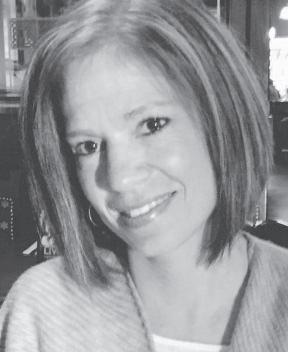
It is with very heavy hearts that the family announces the passing of Kerstin at the Dulcina Hospice in Calgary with her family by her side. Kerstin was brave, strong and did not show any self-pity throughout her 2 month battle to cancer. Kerstin leaves to mourn, her husband, Richard along with their children, Macy, Merric and Maxim; Mother, Linda; Sisters, Ingrid (Sean) and Kaareen (Dino; Matteo, Ava & Lola); Father-In-Law, Dennis; Mother-In-Law, Cathy; Brother In Law, Jim (Lisa, Braydon, Tristan, Liam & Madelyn); Sister-In-Law, Laura (Jim & Jocelyn); several relatives in Oregon and Germany and lots of great friends. She was predeceased by her father, Jan-Udo Wenzel. We would like to say a special thank you to all the support given from WestJet and to Anita Dobson, we could not have gotten through the 2 months without you!! A Celebration of Life will be held Saturday September, 22, 2018, 2pm at Blackburn Community Hall, Prince George, BC. Please bring any instruments to join in a jam session.

Leboe,RonaldW. Nov30,1943-Sep10,2018
Itiswithgreatsadnessweannouncethepassingof Ronald(Ronnie)LeboeonSeptember10,2018. Ronniepassedawaypeacefullywithhisfamilybyhis side.
Heissurvivedbyhisbestfriend,soulmateandloving wifeLindaof53years;hissons,Stephen(Miriam) andDwayne(Stacy).Healsoleavestocherishhis memory4grandchildren,Keiran,Sonja,Marisaand Ryder.GrandpaBen,3brothers-Perry(Helen), Terry(Karen)andRoger(Maria).AlltheSitoskisand manyneices,nephews,cousinsandotherrelatives. PredeceasedbyhisparentsHaroldandPhyllisLeboe andsisterShirley.
RonnieworkedasaHeavyEquipmentOperatorat Canforformanyyears.Helovedspendingtimewith hisfamilyandfriendswhetheritwassittingaround thetoxictableuntilallhours,spendingalotoftime onLadyLindaorchasinghisgrandchildrenacross provincestocheerthemon.
Wewouldalsoliketotakethistimetothank everyonewhowasinvolvedinRonnie’scareat UHNBC.Inlieuofflowers,pleaseconsidera donationtothePulmonaryFibrosisFoundation.
Everyonewhoremembershimisaskedtocelebrate Ronnie’slifeintheirownwayraisingaglassoftheir favoritedrinkinhismemorywouldbequite appropriate.
TherewillbeanopenhouseatRonnie’sonSaturday, September15th,2018between1and4PM.Allare welcometoattend.
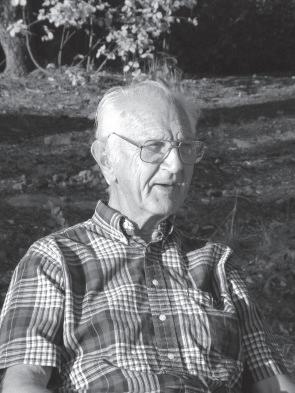
Willms,John August16,1925-September10,2018
Dr.JohnWillms,93,passedpeacefullytobewithhis LordJesusonSeptember10,2018afterabattlewith cancerandhealthcomplicationsrelatedtohisage.
Alongtimeresidentandpracticingphysicianin PrinceGeorge,JohnandhiswifeFrances,movedto theNorthin1956.Atthattime,Johnwasoneofnine doctorsinPrinceGeorgeandquicklytookon multiplerolesatthePrinceGeorgeHospitalincluding surgery,anaesthesiaandobstetrics,inadditionto caringfortheday-to-daymedicalneedsoflocal families.Helovedservinginhislocalcommunity,but Johnalsocommittedhislifetodirectlyservingthose aroundtheworldwhomadelessthan$1aday.This ledJohnandFrancestojoinnumerousChristianbasedcharitableglobalrelieforganizationsthrough whichtheyvoluntarilyservedover10yearsin variouscountriesincludingThailand,Paraguay,Zaire, Vietnam,NepalandZambia.
Johnissurvivedbyhislovingwifeandsoulmate Frances,hisdaughterAnn(Terry)andsonsPeter (Carole)andMichael(Manisha).Alsomourninghis passingarehisgrandchildrenMegan,Stephanie, Katrina(Barry),Kirsten(Kyle),RhysandAlexander andgreatgrandchildrenMadelynnandEdison.Heis predeceasedbyhistwobrothersandfoursistersand mostsadlybyhisgreatgrandsonStevie.
AservicecelebratingJohn’slifewilltakeplaceat WestwoodMennoniteBrethrenChurchinPrince GeorgeonFriday,September14that1:00pm.
JohnandFrancescommittedlongtermtothe supportofCanadianFoodgrainsBank (https://foodgrainsbank.ca/),anorganization committedtothesupportofimpoverishedpeople aroundtheworld.Asafamily,wearealsoforever indebtedtotheamazingworkofthestaffatthe PrinceGeorgeHospice.InJohn’smemory,andin lieuofflowers,adonationtoeitheroftheabove organizationswouldhonourhislifeofservicetoGod andblessthepeoplehestrovetohelpthroughouthis life.

Patrick McKeown
of the
passed away peacefully September 6, 2018. He was born in Cutknife Saskatchewan on May 20, 1929. Pat was always a cowboy and most comfortable on the back of one of his beloved Arab horses. He remained committed to, and loved by, his soul mate of 70 years, his wife Dorothy. Proud father of his daughter and five sons; he bragged about their expertise in any endeavour they took on. He had a wicked sense of humour, an avid news- junkie, loved working in his leather shop, a breeder of fine Arabian horses, a gentleman, teller of stories, loved trail riding and cattle drives and was a great role model for his family and friends.
Preceded by his parents Jack and Florence, his beloved son Ted, as well as brothers Paul, Lonard, and sister Faith.
Survived by his precious wife Dorothy, his daughter Laurel (Brad) and daughter in law Janet; sons Neil (Gail), Lloyd (Phyllis), Colin (Lauri) and John (Tammy); grandchildren Joshua (Robert), Michael (Angie), Kelly (Ryan), Scott, Megan, Jessica (Darrell), Brittany (Tyler), Shaun (Jeanie), Shaela (James), Daryl (Ashley), Daniel (Alisha), Darcy (Kristen), Samantha; eight great grandchildren and his sisters Melba, Patricia and Beverly. He will remain eternally in the hearts of his family and friends. See you in heaven dad, we are blessed with a legacy of stories, family history, jokes and hysterical anecdotes.
The family has held an intimate and noisy celebration of his life.
There will be a funeral at College Heights Baptist Church Saturday September 15 at 1:00 with cake and coffee to follow in the reception area.



VICTORIASPORTSPHYSIOTHERAPY

Islookingforaphysiotherapist(s)tojoinourteam!
Thesuccessfulapplicant(s)mustpossess: -AminimumofaBachelorofScienceDegreein
PhysiotherapyorMastersofScienceDegreein
Physiotherapy
-Full-timeorinterimregistrationwiththeCollegeof PhysicalTherapistsofBC(CPTBC)andbeingood
standing Thepositionwearelookingtofillispermanent,full-time. Contact:250-564-3820orvspclinic@telus.net

H&RBLOCKCANADAINC.INCOMETAXPROFESSIONAL
BECOMEATAXPROTODAY!
EnrollinTaxAcademyandlearntoearnasanIncome
TaxProfessional
OVERVIEW:Seewhatittakestobecomeaproatincome taxesatH&RBlock’sTaxAcademy.Thealwaysindemandskillsandknowledgeyou’lllearncanopendoors torealjobopportunities.
CAREERBENEFITS:
-Trainingfromindustryleaders
-Theabilitytotackleanytaxsituation
-Theopportunitytoworkasapart-timetaxprofessional atH&RBlock
-Flexibilityandindependence
There’sneverbeenabettertimetoenroll.Classesstart thisSeptember. Visit:www.hrblocktaxacademy.ca Call:250-562-6247
Established
PACIFICWESTERNBREWING MANUFACTURINGSUPERVISOR
WearelookingforanexperiencedManagerto overseevariousdivisionaloperationsatourplantin PrinceGeorge,BConatemporary/contractbasisto coverincreasedworkloadsforaperiodrangingfrom 6-12monthswiththepossibilityofrenewal.You’ll assistinguaranteeingthatmanufacturingremainsa smoothandefficientprocessbymonitoring employeesandorganizingworkflowsinvarious departmentssuchaswarehousing/logistics,bottling, maintenance,andpackaging. 604-421-2119dheffelfinger@pwbrewing.com







































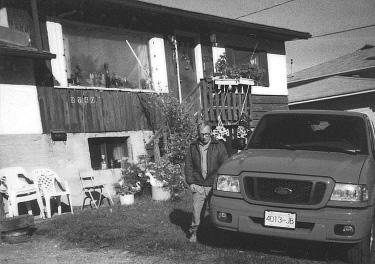


















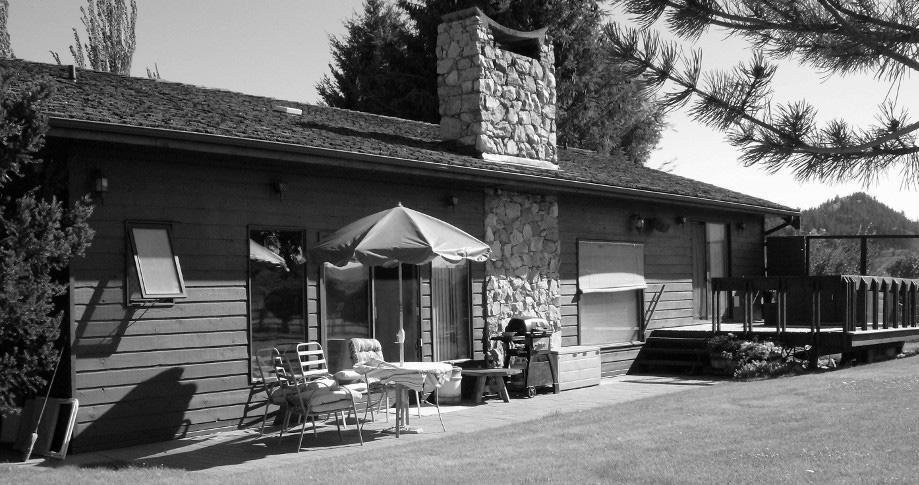



Currencies
OTTAWA — These are indicative wholesale rates for foreign currency provided by the Bank of Canada on Wednesday. Quotations in Canadian funds. Australia dollar 0.931
real 0.3151 China renminbi 0.1896
1.5122 Hong
dollar 0.1658 India rupee 0.01803 Indonesia rupiah 0.000088
Andy BLATCHFORD Citizen news service
OTTAWA — Finance Minister Bill Morneau is looking at targeted measures to enhance Canada’s competitiveness rather than broad-based corporate tax cuts, sources say.
For months, the federal Liberals have been under pressure from business leaders to respond to a U.S. tax overhaul that many warn has put Canada at a disadvantage.
Morneau told reporters this week that he hadn’t ruled anything out when specifically asked whether tax cuts would be part of his competitiveness plan.
But Morneau has been meeting with businesses
0.001159
TORONTO (CP) — Canada’s main stock market resumed its downward trajectory Wednesday as energy stocks failed to get a lift even though crude oil prices hit nearly a nine-week high.
There was a disconnect as the overall market didn’t benefit from higher commodity prices because of uncertainty over NAFTA negotiations, said Candice Bangsund, vice-president and portfolio manager for Fiera Capital.
“We’re not there yet and I think the market is just expressing a little bit of caution there and just waiting for some sort of tangible news on the NAFTA front,” she said.
“That NAFTA overhang has really weighed on the index fairly generally and the hope is that we do get some sort of positive news on that front and likely could see a relief rally on Canadian stocks.”
The S&P/TSX composite index closed down 45.23 points to 16,049.02, after hitting a low of 15,993.58 on 266.3 million shares traded. The decrease came a day after the market hit its first daily gain in September.
Market heavyweights industrials, financials and energy all closed down.
Gold, materials and base metals led on the positive because of a lower U.S. dollar and hope that a solution could be found in the U.S. trade dispute with China after a report said that the Americans were seeking new trade talks before even imposing new tariffs.
“We find this to be fairly encouraging and I think the market is tentatively, cautiously optimistic so that’s why you’re not seeing a strong relief rally,” Bangsund said.
Offsetting the hope was a down day in the United States for the market-heavy U.S. technology sector.
In New York, the Dow Jones industrial average gained 27.86 points to 25,998.92. The S&P 500 index was up 1.03 points to 2,888.92, while the Nasdaq composite was off 18.24 points to 7,954.23. The Canadian dollar was trading at an average of 76.84 cents US compared with an average of 76.22 cents US on Tuesday.
The gain came as the October crude contract was up US$1.12 at US$70.37 per barrel, the highest level since July 13. The improvement was driven by the U.S. producer price index posting its first monthly decline in 18 months, a weaker U.S. greenback against several currencies and concern about the impact of Hurricane Florence that is set to hit the U.S. southeastern coast.
“On the oil front we saw a larger than expected weekly draw down in crude stockpiles so this is contributing to an already fairly tight crude market,” she added.
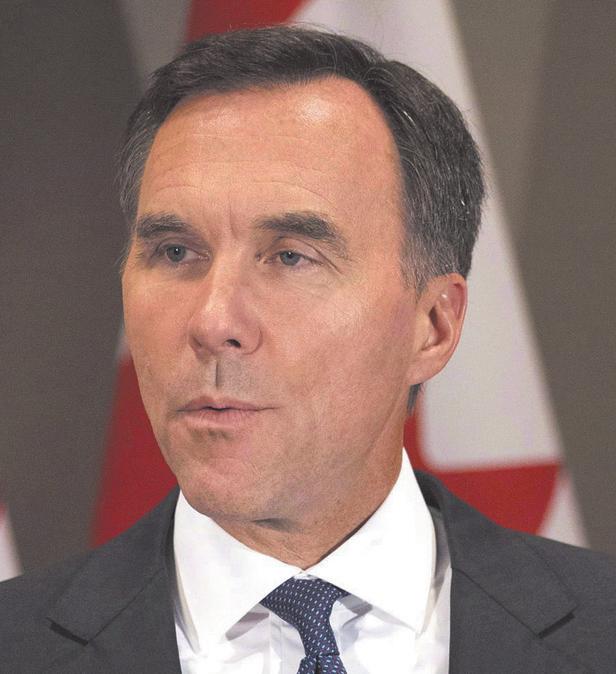
across the country in an effort to find the best way to deal with the U.S. changes. And sources with knowledge of the federal approach who spoke on condition of anonymity say his emphasis has been consistently on targeted measures.
Morneau intends to announce plans in his fall economic update to bolster Canada’s competitiveness.
The Trump administration’s changes include big tax reductions for businesses and loosened regulations, which have created fears Canada has lost part of its edge as an investment destination.
The finance minister has been analyzing the impacts of the U.S. changes and has spent the summer on a “listening tour” to get feedback from the Canadian business community.
Industry stakeholders have been calling for lower taxes – but a cut to the federal corporate rate would come at a cost. A tool on the parliamentary budget officer’s website
estimates that a one percentage point reduction to the business tax rate would trim about $1.7 billion per year from federal revenues. There are, however, also recommendations that Morneau consider a cheaper option: allowing all companies to immediately write off new equipment purchases. The U.S. tax package enables American companies to immediately write off the full cost of new machinery and equipment. Canada already offers this provision for its manufacturing sector and there are calls for it to be expanded to cover all industries. Some experts believe this kind of measure should be combined with cuts to business taxes.
Don’t lose your lunch money to the tax man
On the roughly two-mile walk to the elementary school, a dirt road shortcut led through a thick rainforest, ending in a small meadow. The grassy area was graced by a small, but storied, wooden building. The Paper Shack, as it was known, which was just out of sight of the schoolyard through the trees.
There were numerous adventures in the lush rainforest – salmonberries, huckleberries, frog ponds, mud bogs and trees to climb, but the Paper Shack was the most notorious by far. Primary schoolers invariably stepped up their pace as they approached, and kept heads down, rather than make eye contact with its ominous dwellers.
Here gathered the paperboys, all muscles, pimples and scornful gazes. Their cracking early-adolescent throats, bellowing, swearing, spitting and inhaling tobacco; their strong arms hefting the heavy newspaper sacks. Humble as their title might sound, they might as well have been the Mafia to youngsters sporting Mr. Dressup lunchboxes and freshly-pressed corduroy pants. My big brother was a paperboy. That alone proves that the position was reserved for the perpetually angry.
This rustic cabin, painted Boy Scout green, had glassless windows and a doorless entry, and was barren inside, except for a few well-supported shelves lining the walls.
These heavily-constructed ledges could each support several bundles of afternoon newspapers. The Vancouver Sun owned and operated these types of buildings all over the region, generally situating them where their cheap labour could easily access them.
With its proximity to the schoolyard, and its largely-obstructed view from anyone in authority, the shack was also the perfect place for a menacing sort of toll.
“What’s in the lunch kit, sweetheart? Let’s have it!” they’d say. They were highway robbers for kids who were late for school – a sort of trail tax, ruthlessly enforced.
This playhouse for bullies was beyond
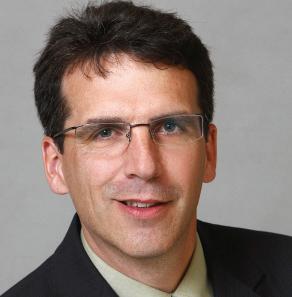
the reach of authority, so the Paper Shack was also the meeting place for anyone at the school who had a score to settle. It was thrown down as a challenge to a fist fight – a dare.
“Meet me at the Paper Shack after school... if you’re man enough.”
Being mugged for a trail tax of a PBJ and a Wagon Wheel is tiny compared to a typical investor’s annual tax bill, but which one invokes more dread?
Paying tax means you’re making money – doing life right – but never pay more than you should. Never walk the long way to school. And pay no taxes you don’t have to.
As we do each fall, we now undertake our annual look at year-end tax planning, all within the full view of the CRA schoolyard, and even blessed (grudgingly) by them.
There are competing interests in strategizing on these things. Triggering investment gains versus taxes. Triggering tax losses, versus future gains, etc.
Each is based on its own merits, but as a principle, making money is good, and that sometimes means paying tax.
If you’ve already triggered gains this year, and you’re holding securities with unrealized losses, consider selling them. This is called tax loss selling. But if the investment still has strong fundamentals and meets your investment needs, think twice, or consider a substitution. The sale for Canadian tax purposes will be deemed to have taken place on the settlement date. Assuming a twoday settlement period, in order to utilize this strategy for 2018, transactions must be initiated by Dec. 27, 2018 for both
Canadian and U.S. But seriously, I’m on vacation that day and so probably are you so… early December makes more sense.
In order to ensure that your capital loss can in fact be claimed, be aware that a superficial loss will occur when a security is sold at a loss and both of the following occur:
1) During the 30 days before and 30 days after the settlement date, you or a person affiliated with you buys the identical property, and;
2) At the end of that period you or a person affiliated with you owns or has rights to acquire the identical property. This applies to holdings across all of your accounts, an affiliated person or company.
A capital loss must first be applied against any current year gains. Then the balance of the loss can be either carried back three years (to gains from 2015, 16, or 17) or carried forward indefinitely. This is your last chance to carry back your losses to 2015.
If you plan on triggering a capital loss in a corporation, speak to your qualified tax advisor, as this gets more complex. As we approach the end of 2018, if you have unrealized gains on investments you are thinking about selling, consider deferring until early 2019 if you expect your taxable income to be lower in 2019 than in 2018. Waiting the short time to January 2019 means a full year deferral on the tax.
Before losses can be carried back three years, they must first be used to offset capital gains in the current year. Therefore, realizing capital gains at the end of 2018 would reduce the amount of capital losses you could carry back. This cries out for a spreadsheet detailing the data. Mark Ryan is an investment advisor with RBC Dominion Securities Inc. (Member–Canadian Investor Protection Fund), and these are his views, and not those of RBC Dominion Securities. This article is for information purposes only. Please consult with a professional advisor before taking any action based on information in this article. Ryan can be reached at mark. ryan@rbc.com.


Tara DESCHAMPS Citizen news service
TORONTO — Roots Corp. got a big sales boost from Canada’s 150th birthday, but now that the party’s over, the apparel brand is facing some troubles.
On Wednesday, the Toronto company known for its heritage-based products and leather goods reported a $4.08-million net loss for its second quarter, up from a net loss of $8.34 million for the same period last year.
Roots’ adjusted net loss was $0.06 per share for the quarter that ended on Aug. 4, falling short of the $0.02 per share expectation from analysts surveyed by Thomson Reuters Eikon.
Chief executive officer Jim Gabel said the disparity followed a particularly strong second quarter in 2017 – when there was heightened interest in products emblazoned with Canadian flags, red and white designs and other nods to the country’s history.
During a Wednesday conference call with analysts, chief executive officer Jim Gabel said, “We benefited from one-time traffic and sales related to the celebration Canada’s 150th birthday throughout 2017, given our strong Canadian heritage and unmatched Canada collection.”
Now that the birthday year is over, Gabel said the company is seeing success in its women’s dresses, graphic T-shirt and fleece categories, which saw sales jump by 136, 25 and 33 per cent respectively.
But he admitted, there are areas where the company “can be better.” There is room for the expansion of seasonally-relevant products in warmer months and more lighter weight sweats, dresses and graphic T-shirts, he said.
“We have made good progress on this front, but we haven’t transitioned far

enough.” The company’s stock plummeted on the news, closing down $1.46, or 15.65 per cent to a record low of $7.87, down more than one-third from its IPO price of $12 on Oct. 25. On the bright side, total sales rose 3.6 per
(AP) — The United States may have reclaimed the title of the world’s biggest oil producer sooner than expected.
The U.S. Energy Information Administration said Wednesday that America “likely surpassed” Russia in June and August after jumping over Saudi Arabia earlier this year.
The agency says that conclusion is based on preliminary estimates.
If those estimates are right, it would mark


cent to $60.2 million in the second quarter compared to the same period last year, while its comparable sales growth increased 1.1 per cent.
The company faced some headwinds, when the summers brought “ebbs and flows” in store traffic, he said, but con-
the first time in decades that the U.S. has led in output.
U.S. production has soared in recent years because of techniques including hydraulic fracturing, or “fracking,” the use of chemicals, sand, water and high pressure to crack rock formations deep below ground, releasing more oil and natural gas.
Fracking is driving a drilling boom in the Permian Basin under Texas and New Mexico.
sumers are “increasingly embracing” the retailer’s e-commerce offerings. Sales through Roots’ shop online and pick-up in-store offering have more than doubled and sales of items purchased online and delivered to consumers’ homes rose by 55 per cent year-over-year, he noted.
The practice is controversial, however. Opponents say that fracking results in toxic contamination of groundwater and increases the number of earthquakes in places like Oklahoma and Texas.
The U.S. energy agency estimated that the United States produced an average of 10.9 million barrels a day in August, compared with about 10.8 million barrels a day by Russia and around 10.4 million from Saudi Arabia.
Citizen news service
CUPERTINO, Calif. — Apple unveiled three new iPhones on Wednesday, including its biggest and most expensive model yet, as the company seeks to widen the product’s appeal amid slowing sales.
CEO Tim Cook showed off the iPhone XS Max, which has a bigger screen than the one on last year’s dramatically designed model , the iPhone X. It’ll cost about $1,100, topping the iPhone X, which at $1,000 seemed jaw-dropping at the time. An updated iPhone X, now called the XS, stays at $1,000.
As with the iPhone X, both new phones have screens that run from edge to edge, an effort to maximize the display without making the phone too awkward to hold. The screen needs no backlight, so black would appear as truly black rather than simply dark. The Max model looks to be about the size of the iPhone 8 Plus, though the screen size is much larger.
The iPhone XS Max, which will be available on Sept. 21 – with orders open the week before – represents Apple’s attempt to feed consumers’ appetite for increasingly larger screens as they rely on smartphones to watch and record video and to take photos wherever they are.
By making more expensive iPhones, Apple has been able to boost its profits despite waning demand as people upgrade phones less frequently.
IPhones fetched an average price of $724 during the April-June period, a nearly 20 per cent increase


from a year earlier.
Apple also showed off a cheaper iPhone, called the iPhone XR. It has a traditional, lower-quality screen and an aluminum body; it’s physically smaller than the iPhone 8 Plus but has a bigger screen. It’ll cost roughly $750 and come out on Oct. 26.
All three new models join the iPhone X in getting rid of the home button to make room for more screen. They will have facial-recognition technology to unlock the device.
Although it didn’t sell quite as analysts anticipated, the iPhone X still emerged as the most popular in Apple’s line-up, according to Cook. That emboldened the company to aim an even more expensive device at the affluent households that tend to gravitate to its products, especially in the U.S. and Europe.
For everyone else, many of whom are still using iPhones they purchased several years ago, there’s the XR.
“I am going to go out on a limb and say the XR is going to become Apple’s top-selling iPhone,” said analyst Patrick Moorhead of Moor Insights. “It is a smart strategy to keep more people in the Apple ecosystem and get even more people to come into it.”
The next major update to the iOS will be released next Tuesday, followed a week later by a Mac software update. Both will be free to install.
Apple also announced updates that push its Apple Watch further into medical device territory. It has a larger screen and a built-in heart sensor that the company said can detect irregular heart rates and perform an electrocardiogram. The latter feature has been cleared by the U.S. Food and Drug Administration, the company said.
Ben Wood of CCS Insight said getting U.S. regulatory clearance for that is a milestone that underscores the company’s leadership in health and fitness. Typically, smartwatches are marketed as consumer devices, not medical ones needing clearance. These features will be available to U.S. customers later this year, but Apple did not say when it would make it to the rest of the world.






Bill Lloyd, the third oldest of 12 children, was born in Viscount, Sask. in 1928. He was only 12 years old when his family arrived in Prince George in 1940. He married Joey (Josephine) Lybeck in 1955. Here is their story in a nutshell.
Bill said, “I was a pretty big kid when I was 15 years old and I was able to land jobs at the sawmills. My first job was tailing the head saw which sounded pretty romantic to me at first but I soon found out that there was nothing romantic about it. It was my job to pull and stack the bark slabs as they were sawed off the logs. It was back breaking work and you had to keep up.
“By the time I was 18, I was working for a steam sawmill along with my older brother Merle. We were the carriage crew until Merle got drafted. Over the years I worked at sawmills at Shelley, Eaglet Lake, the Trick Lumber Company, the Upper Fraser Sawmill and a sawmill in Red Deer.
“It was about this time that my brothers Merle, Ben, Howard and I got talking about going into business together. We purchased a bush mill in 1951 and named ourselves the Lloyd Bros. Lumber Company Ltd.
“I was the sawmill person while Merle, who was the senior member of the company, undertook the bush logging. Ben
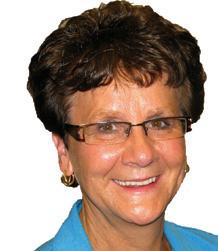
looked after the trucking end of the business and later took on the lumber sales and looked after the planer and the dry kilns.
Howard was the cat skinner (cat operator) and did the logging with Merle.
“Time went by and Howard went out on his own and did very well for himself.
“Over the years we built three new sawmills with each of them being improved and better than the previous one. Lloyd Bros. Lumber Company operated sawmills at Swede Creek, Cluculz Lake and Isle Pierre until 1969.
“Our last sawmill at Isle Pierre was quite modern and we produced pulp chips for the new Canadian Forest Products mill in Prince George. After nearly 20 years in the business Canadian Forest Products offered us a good deal and bought us out along with our considerable timber quota.
“Interestingly the mill site located at Isle Pierre is still operating although it is now what they call a super mill.”
Bill met Joey (Josephine) Lybeck in 1953. Joey, the youngest of three children, was born in Prince Albert, Sask. in 1934.
Her father worked for
Northern Commonwealth, a wartime pilot training program in Prince Albert from 1942-43. He installed engines in the Tiger Moth planes that were built and used in the training program.
Her family moved to New Westminster in 1943 looking for better weather and work in her father’s trade as a mechanic.
Joey grew up in New Westminster and graduated from the Duke of Connaught high school. While in high school she worked at the Eaton’s retail store on the weekends. She worked at a fish cannery that summer and then went on to Normal School for teachers training. She graduated from Normal School in 1953 and taught 40 students in a Grade 2 class in New Westminster.
Students who went to Normal School at that time were assigned to their classes alphabetically. It just so happened that she went to school with Bill’s sister Marie Lloyd. It was through this association that she eventually met Bill Lloyd in 1953.
Bill was living in Prince George and when he came for a visit during spring break-up in 1954 the young couple got engaged. They were married in 1955 and as they say the rest is history.
Joey said, “I successfully applied for a teaching job in Prince George. Ray Williston was the school superintendent and he hired me to teach at the Connaught elementary school.
I taught Grade 2 and I had 35 students in my class.
“I taught school until our children started to arrive and then I became a stay-at-home mom. We had three beautiful daughters – Sandra (Hector) Theroux, Margot (Peter) Slater and Nancy (Brian) Gallagher and I am proud to say that all three of our girls graduated from the University of BC with degrees. We now have seven grandchildren.”
Joey volunteered with anything to do with her three girls at their schools. She volunteered in the library at the John McInnis school for five years, taught Sunday school at St. Michael’s for many years and worked with other church members to help build their church on the corner of Victoria and Fifth Avenue.
Joey has been a member of the Beta Sigma Phi for 60 years and participated in their many volunteer activities.
She was a member of the board of directors who got together to build the local YMCA. She said, “We had a group of men who wanted to play handball and needed a place to play. They had an idea and organized a board of directors with the idea to build a safe place for many groups and activities.
“At that point in time schools did not have gymnasiums so the YMCA was the perfect solution. We raised money by canvassing the community and we were happy when they supported
the project. Des Parker was the architect and he managed the project.”
Bill served as the president of the Prince George Quarter Horse Association for five years and he has been a member of the Kinsmen Club since the age of 30; he is now part of the senator’s club.
He served on the Prince George Exhibition board of directors for ten years. He started and then ran the PGX logger sports competition events.
Bill said, “We did the real stuff back then and we had competitors from New Zealand, Australia and the United States. The logger sport is no longer a competition and has since changed to a demonstration event.”
Bill and Joey golfed and curled together for years and he still enjoys fishing.
The family did downhill and cross-country skiing together but the main interest were their horses out on their ranch in Vanderhoof.
His real passion was golf and he said, “I am proud to say that over my lifetime I had three holes-in-one. I retired from golf the day that my golf sticks weren’t working so good any more.”
Bill and Joey agreed when they said, “We had a very fulfilling life. We traveled and we lived our lives together and our daughters gave us three really great sons-in-law and we can say that they each made a good pick.”

During my rebellious teen years, I remember listening to an incredible band from Detroit (The Motor City) called The MC5. On one of their live albums, recorded in the late 1960s, they made a statement that struck me and has never left me.
“Brothers and sisters, the time has come for each and every one of you to decide whether you
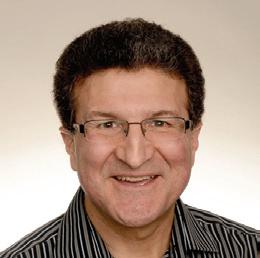
Gerry ChidiaC
are going to be the problem or whether you are going to be the solution.”
It is obvious that the world has problems. Injustice, hunger, crime, poverty, racism and abuse have been with us for many years and will not leave

us in the foreseeable future. If I do not want to be the problem, how do I become the solution?
Some say that we need violent revolution. History shows, however, that these regime changes rarely bring about long-lasting and significant transformations. Countries remain poor and human rights abuses continue.
The groundbreaking twentieth century Anthropologist Margaret Mead stated, “Never doubt that a small group of thoughtful, committed citizens can change the world; indeed, it’s the only thing that ever has.”
How does one become a “thoughtful and committed citizen,” however? How do the rest of us know who to follow? How do we even know what kind of world we want to create?
Could “being the solution” simply mean embracing the essence of what it means to be a good person? If that is indeed the case, what ideals must one strive for in order to live this kind of a meaningful life?
First Nations traditions reflect global wisdom in calling upon us to live The Seven Sacred Teachings.
As stated by Empowering the Spirit, these principles include:
Wisdom: To cherish knowledge is to know wisdom.
Love: To know love is to know peace.
Respect: To honour all of the creation is to have respect.
Bravery: Bravery is to face the foe with integrity.
Honesty: Honesty also means “righteousness”, to be honest with yourself in word and action.
Humility: Humility is to know yourself as a sacred part of creation.
Truth: Truth is to know all of these things.
Stephen Covey, in his book The 7 Habits of Highly Effective People, guides his readers through an exercise which some may find morbid, and most find quite challenging. He tells us to imagine that we are at our own funerals, and to write down what we think our family members, coworkers and friends would say about us in their eulogies.
Would my family members say that I lived with love and respect? Would my coworkers say that I lived with wisdom, honesty and bravery? Would my dearest friends call me a person of humility and truth?
These are not easy questions
to answer, but they can help us to refocus our lives. Covey culminates this activity in calling upon each individual to come up with a personal mission statement which will serve as a compass on the journey of life. It is very easy to get distracted by easy money, manipulative power and shallow relationships, but at the core of our being we know what is right. This is why The Seven Sacred Teachings resonate so deeply for all of us, no matter where we are from or what religion or philosophy we follow. These are the principles that lead to a joyful and satisfying life.
How do I choose whether I am going to be the problem or whether I am going to be the solution?
Perhaps the best answer came from Mahatma Gandhi, the man who was arguably the greatest revolutionary of the last century.
“Be the change you wish to see in the world.”
Gerry Chidiac is a champion for social enlightenment, inspiring others to find their greatness in making the world a better place. For more of his writings, go to www.gerrychidiac.com.
Jocelyn
NEW YORK — Opening Ceremony, the label that always seems to find quirkier and more unusual ways to display its clothes during Fashion Week, upped the ante on Sunday with a festive drag show, featuring a surprise guest performance by Christina Aguilera and a front-row appearance by Nicki Minaj.
The event, called The Gift of Showz, was created by Sasha Velour, the drag performer who last year won Season 9 of RuPaul’s Drag Race, and starred Velour and a number of other prominent drag performers.
The performers wore items from Opening Ceremony’s latest collection as they took the stage at a West Village cabaret, Le Poisson Rouge, to
model or to lip sync, cheered on by an enthusiastic crowd that included, in the front row, Minaj.
The rapper was attending her first show since Friday’s much discussed dustup with fellow rapper Cardi B at a Fashion Week party.
As the performers did their numbers, a running joke emerged that Aguilera was there, but at first, it turned out only to be a cutout figure of her, and then it was an imitator.
At the end, though, the kidding was over, and the real Aguilera turned up to delight the crowd with a song of her own.
Performers included Hungry, who is based in Berlin and is singer Bjork’s makeup artist, and the American drag artist Lypsinka, along with a number of other artists.

Christine HINZMANN Citizen staff
chinzmann@pgcitizen.ca
It’s his first time in the saddle for the Cops for Cancer Tour de North.
Peter Wharton, a new sheriff in town, hits the road with 35 other riders on Friday to Sept. 20 to raise funds for pediatric cancer research and Camp Goodtimes where sick kids can go have some fun.
The trip goes from Prince George to Prince Rupert, which is a 850-kilometre ride.
Wharton moved to Prince George in January and he’d always wanted to do the Cops for Cancer ride.
When organizer of the event, Erin Reynolds, put out the call looking for riders, he accepted the challenge.
“I threw my name in and I started peddling,” Wharton smiled.
Wharton lost his dad to cancer 10 years ago and watched his best friend go through it and survive, so with those two people in mind, he decided he wanted to make a difference.
“For me, you kind of expect cancer as people get older, but for the kids – they were born into something they have no control over,” Wharton said. “To be able to do something to help come up with a cure, to be able to fundraise to send them to Camp Goodtimes, which is an opportunity for them to just be kids for a bit is great. I’m a father and I couldn’t imagine going through that as a parent.”
Since April, Wharton has been getting
out on the bike for long rides at least three times a week, including those with the Prince George Cycling Club where they go on a 40 km ride once a week.
Then Wharton reached out to the volunteer trainer, Dale Huzar, who works with the Tour de North riders, and rode with him at least once a week, as well.
“This year the smoke definitely hampered a lot of people training for the ride, I think,” Wharton said. “We couldn’t train outside so you’re trying to do everything you could indoors, which isn’t the same. Personally I’m nervous but I know that once we get going the adrenaline is going to carry me through.”
Each day the riders will travel between 75 and 175 km, with the 175 km day finding the riders in the saddle for about eight hours. Challenges include Hungry Hill outside of Houston and the hill that is on the approach to Prince Rupert.
Wharton is inspired by what previous riders have done by way of fundraising is making a difference.
“The previous riders that have raised all this money are making headway with childhood cancer, which is an incredible thing to see,” Wharton said. “Being new to the ride and new to Prince George the thing that I’ve seen is that community support has been incredible.”
Each rider is asked to fundraise with $3,500 as the individual goal and the team would like to beat their total
FrIeND Citizen news service
David
HAMILTON — Shania Twain says she finds inspiration in the fight being waged by Avril Lavigne to return to music despite her heath setbacks.
The country superstar has battled the effects of Lyme Disease for years, and she says she’s aware that Lavigne has faced similar health issues.
“It’s a battle,” Twain said on the red carpet of the Country Music Association Awards on Sunday.
“I’m inspired that she’s going out there and carrying on, and not letting it get in her way.” Lavigne published a statement on her website last week outlining plans to release new music for the first time in five years on Sept. 19.
The single Head Above Water will be the first sample of an upcoming album she calls “a very strong, triumphant, powerful and true record” that reflects her experiences over the last few years.
Lavigne says her battle with Lyme has been the worst period of her life as it took a physical and emotional toll. But she considers her new work “a victorious moment.”
Twain returned to music last year after a long absence that included grappling with the health effects of Lyme.
Since then, she’s launched a comeback of sorts, playing the Grey Cup and the opening night ceremony of the U.S. Open tennis tournament. She’s also made various TV appearances.
Twain hosted the CCMA Awards on Sunday and picked up four accolades including top selling album of the year and the Generation Award for her impact across the world.
While Twain says she’s never spoken to Lavigne about her experiences, she would like to someday.
“We all have obstacles in her life, I’m not letting Lyme’s effects stop me,” Twain said.
“I’m happy to see that she’s not letting it stop her either.”

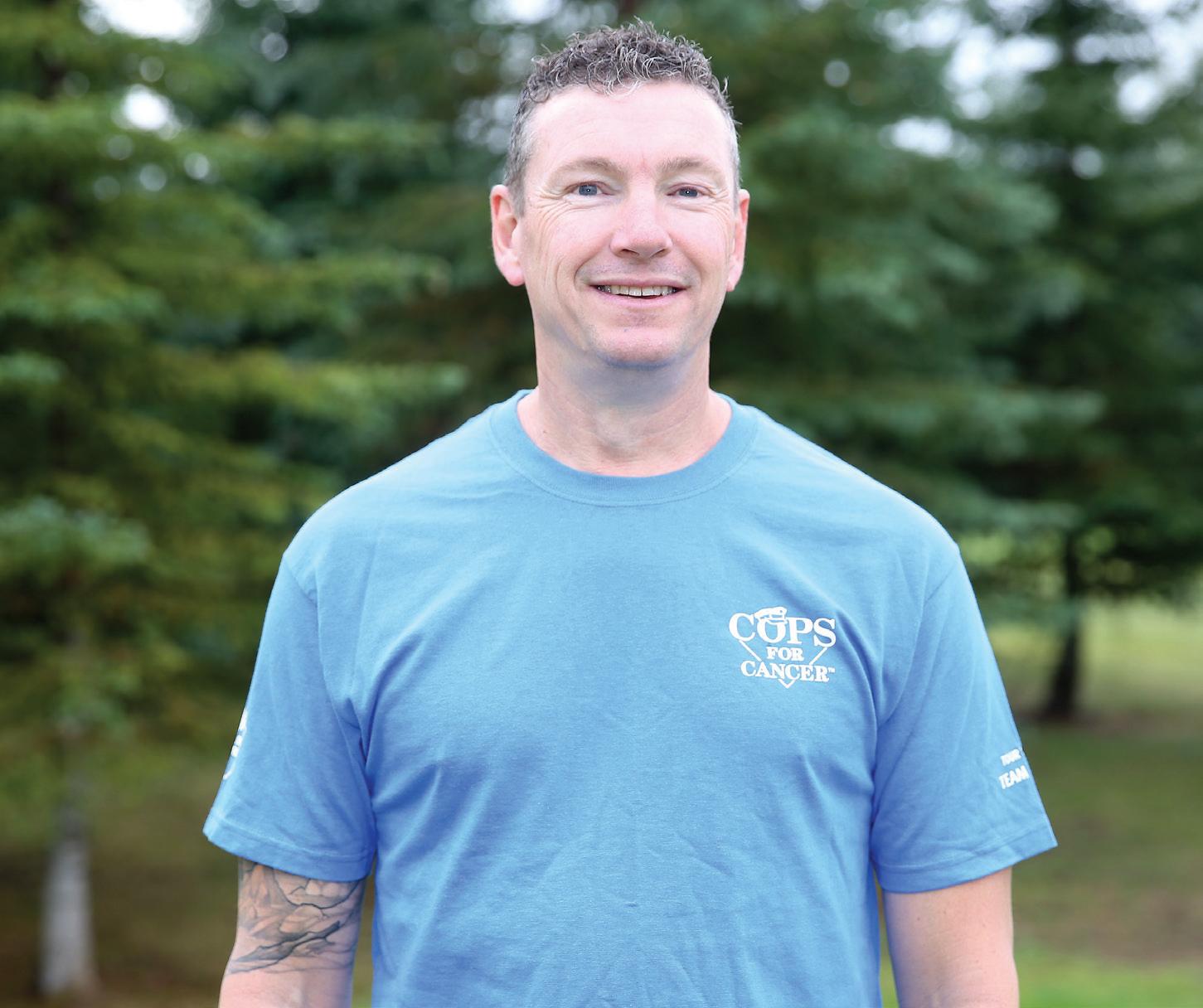
from 2016 which was $353,000. There are four tours in B.C. and so far the provincial effort has raised more than


Popping lids is my jam.
I would like to say that I completely made up this phrase myself because I am infinitely clever and witty however I stole it from a friend of mine. She posted the phrase after I posted a braggy post on Facebook showcasing the fruits of my labour on the weekend: a beautiful double batch of strawberry rhubarb ginger jam.
It is marvelous and I almost wrecked it due to a large amount of overconfidence by thinking that I do not have to follow a recipe. As it turns out, I probably should just pick a recipe instead of winging it and it might cause me less stress next year.
What will likely happen next
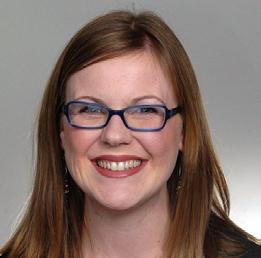
Megan kuklIs
year is that I will blithely ignore all my previous warnings and go ahead and do what I want, because I am a grown woman and I can overcook my jam if I want to.
Somewhere along the way as I am approaching middle-age (vomit), I have developed an incredible fondness for preserving food. In the event of a jam shortage, my family is good. And no, I’m not going to share.
I also have forty pounds of peaches, forty pounds of pears as well as a solid, five pounds

of assorted pickled hot peppers which I will never touch because I have the palette of a three-year-old child.
It’s back to school time for everyone including kindergarten for my daughter. It is an unsettling and empty feeling when your youngest child starts school. Particular when said child (or parents) is not happy about extended gradual entry.
For an entire week, the wee children go to school for an hour a day. Then on the following week, the time gradually increased to two, then two and a half hours, then a half day and then, finally, on week three of school, we are in full-day kindergarten. Which is six hours a day. That is still two hours less than she was used to spending when she was in day care. I would love to have the opportunity to be a stay-at-home parent but it is not in the cards for me right now, nor is it an option for many (most) parents these days.
How do non-stay-at-home parents manage these schedules?
It is a nightmare.
I am extremely happy with my children’s school and I am very excited and sad and all the feelings about my youngest being in

Here are jars of strawberry rhubarb jam where lids could be popping soon.
school. They are growing up so quickly.
If only I could seal them up in a jam jar and keep them from aging, and maybe, also, myself. Happy harvesting and preserv-


ing season everyone. May your lids always seal, your jars stay whole and your pantry remain full of delicious goodness to last you through the long winter.
Scotiabnk AIDS Walk takes place Saturday from 10:30 a.m. to 2 p.m. at City Hall Veteran’s Plaza.
Join in the event in support of those living with HIV/AIDS and help us raise awareness and funds in the Prince George area.
Registration is at 10:30 a.m., opening remarks at 11 and walk to follow.
The AIDS Walk will take place throughout the downtown core. There will be prizes for the team and individual who raise the most funds.
For more information contact Angela Paul or Nicole West, AIDS Walk co-coordinators at Positive Living North by calling 250-562-1172.
Farm Fest takes place Saturday from 10 a.m. to 2 p.m. at the Omineca Arts Centre, 369 Third Ave. Farm Fest is a new Prince George festival set to celebrate local agriculture and food production. This one-day event will bring together local and regional farmers, food producers and other local vendors in a family fun event showcasing local produce, food, live music, visual art and fun and games.
For more information call Roanne at 250-9811241 or email roannewhitticase@gmail.com.

Katie WorKman Citizen news service
Beef usually hogs the spotlight when it comes to stews, but there are plenty of other meats that can star in this quintessential, cold-weather comfort food. Pork, chicken and here, lamb, a big favourite of my younger son, Charlie.
This rich meat also takes well to many flavour combos, and in this recipe, some accessible, Mediterranean-inspired supporting ingredients turn the lamb into a truly delicious stew. If you are a chickpea lover, feel free to add a second can.
These instructions use an Instant Pot, THE appliance of the decade. The Instant Pot is a plug-in pot that performs as a slow cooker, pressure cooker, rice cooker, yogurt maker and a few other impressive cooking tools. In this case, you will first be using the saute function and then the pressure cooker function to cook a tender stew in much less time than it would take otherwise.
Don’t have an Instant Pot? You can also make this stew in a slow cooker. Just brown the meat in the slow cooker if it has a saute function, or if not, brown it and saute the vegetables in a pot on the stove, and then transfer everything to the slow cooker with the rest of the ingredients, and cook on low for 8 hours.
If you don’t have an Instant Pot or a slow cooker, no worries! You can do all of the sauteing in a pot on the stove, and then add the other ingredients as directed and cook the stew, covered, over low heat for about 3 hours until the meat is tender. Give it an occasional stir to make sure the stew doesn’t stick to the bottom. If you prefer to put it into a 300 degrees F oven after all of the ingredients have been combined, that works, too - this should also take about 3 hours. Give that a stir if you think of it every once in a while.
If you don’t have brandy, add a healthy glug of red wine instead. This is a soupy stew, and would be fantastic ladled over noodles of any kind or chunks of steamed potatoes.
So, whether you approach this old school, new school or somewhere in the middle, the cooler days approaching promise to be flavourful.
Servings: 6
Start to finish: 2 hours in the Instant Pot, 9 hours in a slow cooker, or 4 hours on the stovetop or in the oven
1/4 cup flour
1 teaspoon kosher salt
1/2 teaspoon freshly ground pepper
2 pounds 1-inch cubes lamb shoulder or lamb stew meat
2 tablespoons olive oil, or as needed, divided
1/2 cup sliced leeks
1/2 cup chopped carrots
1/2 cup chopped celery
1/2 cup diced fennel
1 teaspoon crushed dried rosemary
2 tablespoons brandy or cognac
1 (28-ounce) can diced or crushed
tomatoes
1 (15-ounce) can chickpeas, drained and rinsed
2 cups beef broth
1 bay leaf
Chopped fresh parsley to serve
In a large shallow bowl combine the flour, salt and pepper. Add the lamb meat and toss to coat it.
Place the inner pot into your Instant Pot. Press the Saute button, and then use the Saute or Adjust buttons (depending on your model) to select the “Normal” or middle temperature. Add 1 tablespoon of the olive oil to the pot, and let it heat for 1 minute. Add the lamb in two batches and brown on at least a few sides of the cubes, about 2 minutes per side (if you want to brown all of the sides, go ahead, but it’s not necessary, and often the pieces of meat aren’t really six-sided “cubes”). Remove the meat with a slotted spoon to a plate, add the remaining tablespoon olive oil if there is not oil in the pan, and repeat with the other half of the lamb.
Add the leeks, carrots, celery and fennel to the pot and saute without the lid on for 5 minutes, until everything is slightly tender. Stir in the rosemary, then add the brandy to the pot and stir for 1 minute. Add the tomatoes, chickpeas, broth, bay leaf and lamb, and stir to combine.
Close and lock the lid.
Set the valve to Sealing. Press Cancel, then press Manual or Pressure Cook and use the Pressure Level Button to select high pressure.
Set the timer for 45 minutes. Note that the timer will not start to count down until the correct pressure has been achieved.
When the Instant Pot beeps, press Cancel. Let the pressure come down slowly for 30 minutes. Release the sealing valve, remove the lid and serve hot in bowls, with parsley sprinkled over the stew.
Nutrition information per serving: 652 calories; 376 calories from fat; 42 g fat ( 15g saturated; 2 g trans fats); 97 mg cholesterol; 928 mg sodium; 35 g carbohydrate; 9 g fiber; 11 g sugar; 34 g protein.



Ann HornAdAy Citizen news service
TORONTO — It’s a little surreal to meet Emilio Estevez in a library. Movie fans of a certain age would be forgiven for expecting him to break out dancing atop the stacks, as he did 33 years ago in The Breakfast Club.
But today the ’80s avatar is in the midst of rebranding himself. Now 56, Estevez has directed six films. His seventh, The Public, had its world premiere Sunday at the Toronto International Film Festival.
Like most of his previous directorial efforts, the film is suffused with modest, humanist values that raise an inescapable question: Can a guy as nice as Emilio Estevez not just get ahead in this business, but still find his place in it?
“That is the question,” Estevez said during an interview at the Toronto Public Library. He’s been a fan of libraries since doing most of his research for his 2006 film Bobby in his local downtown branch in Los Angeles.

The Public, which stars Taylor Schilling, Alec Baldwin, Jeffrey Wright and Gabrielle Union (among many others), was filmed in 2017 at the Cincinnati Public Library. The movie takes place during a life-threatening cold snap in the city when a group of homeless men – many of them struggling with mental illness and addiction issues – barricade themselves inside with the help of a caring reference librarian, played by Estevez himself.
The film was inspired by an essay that the filmmaker read several years ago by a librarian explaining how cuts in the social safety net had made him and his colleagues de facto first responders in one of the last bastions of shared social space for people of all backgrounds, social classes and ethnic identities.
After Sunday’s debut – greeted with a rousing ovation from the audience – The Public received encouraging reviews, if not outright raves. (The Hollywood Reporter called it a “scrappy feel-good drama.”) Now Estevez is trying to convince distributors that an audience exists for a film that he admits “sort of lives between floors. It’s not documentary, it is a dramatic narrative. But it’s about something that is very real and happening on the daily.” It’s also, he says, “a movie that at its core is about social activism.”
In some ways, the potential audience


for The Public overlaps with the one he found for The Way, his 2010 film in which he cast his father, Martin Sheen, as a grieving father walking the Camino de Santiago in memory of his deceased son.
Estevez wound up self-distributing that movie, going city to city on a bus with Sheen to drum up enthusiasm; The Way went on to have an incredibly healthy afterlife, becoming an evergreen hit with faith-based audiences, who are as energized by its irreverent wit and occasional iconoclasm as by its sincere engagement of spiritual questions.
Although The Public isn’t nominally a faith-based film, it’s thematically adjacent.
“There are some faith elements to this film,” Estevez admits, adding that “There’s a goodness to this film that I think exists in The Way.” Where the earlier film inspired “tens of thousands” of people to hike the Camino, Estevez says, The Public could have similar potential.
“It may inspire people to look at mental illness differently, at homelessness differently, to look at libraries differently, to actually go into a library,” Estevez says. “I mean, how long has it been since most people have actually been inside a public library because they have access to computers and cellphones and iPads? And isn’t that really the great divide? It’s the digital divide between class and race. And the public library offers that up for free. They are an essential bridge. If this movie serves to reintroduce people to the value of what public libraries are, it could have a similar ripple effect.”
As Estevez meets with distributors, he’s been heartened by the success of such films as Won’t You Be My Neighbor? and RBG over the summer – films that, like his, seek to awaken the better angels of viewers’ natures. Andy Peterson, an executive at the marketing and distribution firm Aspiration Entertainment, believes that The Public “has a shot at connecting now in a way that it might not have even six months ago.” (Aspiration provided consulting services for the film ahead of its Toronto premiere.)
Pointing to the success of Neighbor and RBG, as well as the television show This Is Us, Peterson says there’s a demographic of viewers that most studios overlook when composing their marketing plans – consumers who “are

not trying to avoid the pain that’s present for most of us in our everyday lives by escaping it with sci-fi fantasy and comic superheroes – they want to cry, to feel something so deeply they almost can’t express it with words, to remember what it was like to be small and scared and vulnerable.”
Estevez, who showed The Public at an American Library Association meeting over the summer, agrees that there is an audience out there for the kinder, gentler movie he’s now dedicated to making.
“We have become so cynical, and I think it’s reflected in – well, we know where it’s reflected. It’s reflected minute by minute on social media,” he says.
“This is a film that pushes back against that. This film is about understanding our humanity a little bit better, and getting to the granular as opposed to just a wide-swath bias.
“We assign certain stories to people we see on the street, and we write it off as... whatever choices they made to arrive here. But that’s our story about them, that’s not their story. Oftentimes when homeless people are asked . . . how they’d like to be looked at by the public, it’s just to be regarded. Smiled at. Said hello to. Valued. Seen and heard. And that is an act of compassion that costs you nothing.”

David FrienD Citizen news service
HAMILTON — Man, she feels like a winner.
Shania Twain proved nothing could stop her at the Canadian Country Music Association Awards on Sunday as she picked up the most accolades of the night – a total of four – after serving as host of the festivities.
The Timmins, Ont.-raised superstar enthusiastically participated in a celebration of her career that included winning the Generation Award and the fans’ choice award.
Twain’s latest album Now was recognized for its appeal across borders, winning the top selling album and top selling Canadian album prizes.
The CCMA Awards opened with a tribute to Twain’s legendary status led by three of Canadian country music’s new generation of female voices: Jess Moskaluke, Kira Isabella and Madeline Merlo.
Twain then joined the trio on stage in a ravishing purple evening gown to finish the song and proclaim that country songs remain close to her heart.
she said.
Twain also spoke about how, for her, music has been “very much a part of survival, right from a very, very young age.”
“It took me away from my problems,” she said.
“I started singing 45 years ago at the age of eight in the local northern Ontario bars, First Nations community centres and old age homes.”
“Today I consider one of my biggest achievements being able to encourage and inspire others,” she added.
And the next generation of female country vocalists also had their moments to shine during the show.
Moskaluke, whose Past the Past locked in album of the year, became the first solo female artist to win the award in 14 years.
Meghan patrick was recognized as female artist for the second year in a row, while Dallas Smith won male artist.
“My musical influences have always been diverse but country music gave me a home, a place where a fast-talking girl from northern Ontario, who dreamt for bigger things for her and her family, could be heard,” she said.
Twain also took several opportunities to celebrate the inroads women are making in the country music industry.
“I’m thrilled to see women in country dominating the album of the year category,” she said, pointing to how rare it was to see so many women among the nominees.
“But we can go further by recognizing a place for diversity in country music by being inclusive and by really respecting what women of country have always been able to deliver: heart, soul and a kick-ass guitar riff.”
When Twain was presented the Generation Award by pop singer Alessia Cara, she paused to recognize how Cara is forging a voice for a younger generation.
“Alessia really represents the empowered, independent female of today,”
Meghan Patrick was recognized as female artist for the second year in a row, while Dallas Smith won male artist.
James Barker Band’s Chills picked up single of the year, giving the song an extra boost after it won top-selling single at a gala dinner ahead of the broadcast.
The Reklaws won rising star.
International country star Keith Urban, who performed his song Never Coming Down, inducted Terri Clark into the hall of fame after a reel of best wishes from longtime pals.
“To be congratulated by Reba, Brooks and Dunn and be given this award by one of the most talented men on this planet is pretty awesome,” Clark said.
“I can’t wait to see where this crazy ride takes me next,” she added. “I’m not done, this is just the second chapter.”
Some CCMA awards were handed out in events leading up to the broadcast.
The Washboard Union took home their third award for roots artist or group.
Moskaluke’s Home Movie won for country music program or special, while the design of her album “Past the Past” received an award for its creative directors.
Stephano Barberis received the video director award for the visual aesthetic he added to numerous projects, including Jade Mya’s Dirt Covered Rhinestone and Gord Bamford’s Neon Smoke.



Kitson JazynK a Citizen news service
Learn a little about lemurs, and you’ll find a lot to love. Today 111 species and subspecies live wild in their native home of Madagascar, a lush island off the eastern coast of Africa. But there’s bad news: Lemurs, experts say, are among the most endangered primates in the world. Learning about them, however, is an important step toward saving them.
One of the most fascinating things about exotic, adorable lemurs is the dramatic differences among their species, according to Cathy Williams, an experienced lemur veterinarian and the curator of the living animals collection at the Duke Lemur Center in Durham, North Carolina.
Some lemurs, such as tiny Madame Berthe’s mouse lemurs, are as small as a golf ball. One of the largest species of lemurs, the indri, weigh as much as 20 pounds, about the size of a French bulldog.
Some lemurs eat seeds while others eat leaves, flowers, insects or bamboo. They differ in personality types, too - some are friendly and curious, and others are quiet and shy or territorial and protective of group members.
“The aye-aye,” Williams says, “is the most curious and inquisitive,” often tapping their keepers’ shoes or trying to grab their keys in their enclosure at the Duke Lemur Center.
Lemurs also vary in the size and type of groups in which they live and in their ways of getting around. For example, sifaka lemurs leap from tree to tree, while brown lemurs tend to walk along horizontal branches.
There are even differences in how lemurs carry their young.
“Some stay in a nest,” Williams says, “some ride and some get parked on branches while Mom is away finding food.”
Madagascar, which is about the size of Texas, is the only place lemurs live wild.


Many scientists consider the island to be “megadiverse,” which means it’s one of Earth’s most rich and unique ecosystems. It’s also home to a variety of animals, including flamingos, fruit bats, crocodiles and chameleons.
According to leading conservationists in a recent report, almost all - 95 percent - of lemur species are close to becoming extinct. That means they could soon cease to live in the wild. Madagascar, in addition to being one of the most ecologically diverse places on Earth, is also one of the poorest. Human activities such as illegal logging, mining of natural resources and burning forests to make room for farming have caused lemurs’ tropical forest habitat to disappear at an alarming rate.
“Lemurs depend on the forest, and their habitat is being destroyed,” says Russell Mittermeier, the chief conservation officer of an organization called the Global Wildlife Conservation.
“Lemurs are so important,” Mittermeier says, “and the world loves them. We shouldn’t let them disappear.”
Seventeen species already have, he says, including one lemur species that was the size of a gorilla.
The animals play an important role in keeping the forest healthy. Fruit-eating lemurs spread seeds as they eat. Flowereating lemurs serve as important pollinators. The beloved animals also play a huge part in the country’s eco-tourism industry.
If humans protect lemurs’ habitat, Mittermeier says, he is optimistic the resilient animals can make a comeback.
What can kids do to help?
Mittermeier says kids should learn everything they can about the species and why the forest is important. Then, share what you know with anyone who will listen. Spend time outside to build an appreciation for nature. Williams suggests planting a native garden, especially one that will attract pollinators, and sponsoring an animal at the Duke Lemur Center.
“We can save lemurs,” Mittermeier says, “and we have the responsibility to try.”
You can see lemurs in the wild if you’re fortunate enough to travel to Madagascar. Here are two places you can meet

them closer to home:
– The Smithsonian’s National Zoo. At the Washington, D.C., zoo’s Lemur Island exhibit, you might see blackand-white ruffed lemurs or ring-tailed lemurs sunning themselves. In the Small Mammal House, catch a glimpse of a rare, rusty-colored red-ruffed lemur(nationalzoo.si.edu/animals/ringtailed-lemur)
– The Duke Lemur Center. Take a trip to Durham, North Carolina, to meet 15 species of lemurs, the most diverse population of lemurs outside of Madagascar. Reservations are required (lemur.duke.edu).
Playing with String Fibre Fest takes place Sunday from 10 a.m. to 4 p.m. at the Senior Activity Centre, 425 Brunswick St. Fibre enthusiasts can gather to share their joys and woes with each other.
All levels of enthusiasm and experience are welcome.
It’s free and everyone is welcome. There will be workshops, demonstrations and a fashion show. For more information email j_boots_5@hotmail.com.

GILBERT, Ariz. — Thirty-five years after an Arizona man cared for his son when he was shot in their native Lebanon, the son is returning that devotion.
Both the Rev. John Ibraham Sabbagh and his 54-year-old son, Ebby Sabbagh, are celebrating one year of going strong since the elder Sabbagh received a crucial stem cell transplant. After undergoing chemotherapy for acute myeloid leukemia, the 88-year-old opted to undergo the transplant in September, 2017, at Banner MD Anderson Cancer Center in Gilbert, about 32 kilometres southeast of Phoenix.
It was Ebby, also the oldest son, who ended up being enough of a match and providing the stem cells.
“We all have learned from this: Be a positive fighter,” Ebby said Friday as he helped his father stand to look at the cake hospital staff provided for his transplant anniversary. “If he doesn’t give up, we don’t give up.”
Dr. Rajneesh Nath has done stem cell transplants on several elderly patients. But never on one as old as John. Nath said he could tell after chemotherapy and other low-intensity therapies that the elder Sabbagh was strong for his age.
“He was walking the hallways and his ability to tolerate (treatment) was not any different than any of the younger patients we treated,” Nath said.
It was ultimately John’s decision and he wanted to take the most aggressive
approach. The elder Sabbagh, who was a chaplain for Arizona Department of Corrections for 13 years, said he thinks of himself as a fighter.
“A fighter, but not in negative way,” he said in a soft-spoken voice.
Dr. Andrew Yeager, director of the Blood and Marrow Transplantation Program at the University of Arizona Cancer Center, said he would give the transplant team “a bottle of good booze to say ‘Boy, you had the guts to transplant to someone in their late 80s.”’
“It’s really up there and atypical,”
Yeager said.
An elderly transplant recipient may have a harder time in some areas such as recovery. Donor stem cells can go on the attack post-transplant, a condition known as graft-versus-host disease.
That can be debilitating even for a young patient. Also, Yeager said, patients ages 60 and older sometimes already have underlying issues with their major organs.
Ebby says their roles are now essentially reversed from when he was shot in Tripoli in 1983 during the Lebanese Civil War. Ebby had just turned 18. He was driving his dad’s car to pick up ice cream after finishing exams. Several men sprayed his car with gunfire at a surprise checkpoint, Ebby said. Despite shrapnel wounds and part of his left leg getting torn off, he managed to drive away.
Eventually friends helped get him to a hospital. He was later transferred to a hospital in Beirut and spent more
than three months there in recovery.
John made the two-hour commute from Tripoli to stay in the hospital or with friends.
“Through this whole thing, Dad was right by me,” Ebby recalled. “He refused to go home until he takes me with him.”
The experience of helping his father through cancer has in some ways brought them closer.
“What I’m getting back is tons. Every moment I cherish,” Ebby said. “We’ve
really had some amazing moments together.”
John will have to have another bone marrow biopsy this month to see if the cancer is still present or has grown. Even with that uncertainty hanging over the whole family, Ebby says they have no regrets.
“Having that opportunity to extend his life, to be able to counter this disease –was it worth it to do this? The answer is yes,” he said.


